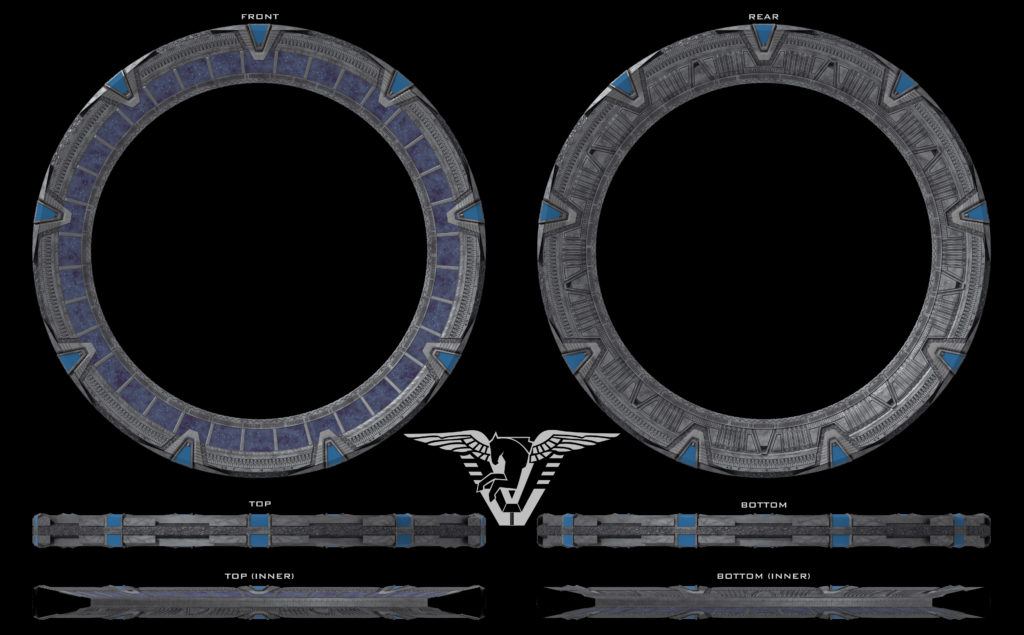
“Stargate 3.1 (Pegasus Version)” for Lightwave 2020, Released July 30, 2021 (CC0) —53 MB
Conversion Kits:
- FBX Version (CC0)—93 MB
- FBX Animation Templates (CC0)—0.8 MB
- OBJ Version (CC0)—101 MB
- Texture Reference (CC0)—67 MB
After over a year, I’ve reached the end of my 2020 pandemic modeling project with the completion of the version of the stargate used in Stargate Atlantis. Alongside the movie and SG-1 versions, that makes a complete set for this basic design.2The Universe version being a totally different design, and the Origins version being intended to match the movie version, even if it didn’t quite hit the mark perfectly. While I don’t think I’m quite done with Stargate just yet, I’m probably done with modeling actual stargates for a while.
I recalled from making-of specials like the Sci-Fi Channel Lowdown around the premiere of SGA that the Atlantis setpiece had a very different construction than the SG-1 versions. It was made primarily of stiff rubber, and was durable enough it to be mounted on a hinge, and was folded into a hidden compartment under the gateroom floor so the set could be redressed to represent other parts of the city. What I didn’t realize was that the Atlantis stargate, while superficially similar to the SG-1 version, was an almost entirely unique piece of design, with only a few pieces directly duplicated from the prior version. I’ll go into this in more detail in a later post, but it meant that making the Atlantis version of the ‘gate pretty much entailed doing everything I’d done for the movie/SG-1 versions over again in a slightly different way. Luckily, I benefitted from experience (the only real way to learn to model an object is to try to model it in the first place), and the most tedious parts of the original design, the raised mosaic tiles under the chevrons and along the outer rim of the ring, were considerably simplified in the Atlantis design, cutting the amount of patterns I had to examine and duplicate down to… let’s say 20% or so.
The paintjob of the Atlantis ‘gate was also quite different from the SG-1 version. There were three main textures used in combination, a dark gray, polished rock, a silver brushed metal, and a bluish/purple crystal (there were also a translucent light gray on the chevrons, and translucent blue for the chevron blocks). The ‘gate has the appearance of having started as a solid piece with an anodized silver coating, which had engravings carved into it, revealing the raw naquada under the surface. The silver surface layer was also weathered in a roughly circular manner, suggesting it had been polished over time and begun wearing away even in the flat parts. A subtle patina of blue crystal was spread throughout, along with the blue crystal being the primary texture of the inner ring. I achieved the effect using material mixers revealed with procedural textures and Lightwave’s Edge node (nominally meant to simulate rounded corners on low-poly objects, but also quite useful for having weathering follow along a model’s details).
True to the original setpiece, I made the inner ring translucent, and the glyphs glow from below it, giving a subtle dimensionality to them. I also was sure to make the lower half of the chevrons translucent, allowing the glyphs to glow through them, as well. In the pre-HD days, I thought that was a sign the glyphs were sometimes front-projected onto the setpiece, before I realized the chevron itself was partially see-through.
In actuality, each glyph panel on the Atlantis setpiece housed a programmable custom LED array featuring what has become nicknamed the Superglyph.
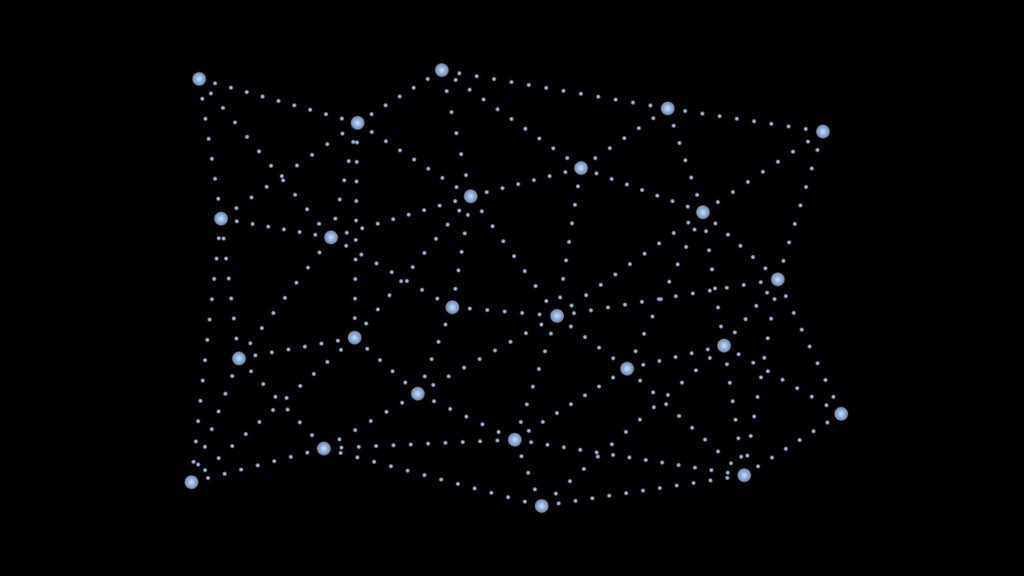
All of the Pegasus galaxy stargate symbols are based on this web of 24 stars and the possible connections between them, meaning that the setpiece could be programmed to display them in any configuration or pattern. I modeled a Superglyph for myself, and deleted the appropriate sections to make 36 glyph objects that could be animated (ironically, in the 3D world, it’s much easier to have the glyphs actually move than to give the illusion of movement by blinking on and off).
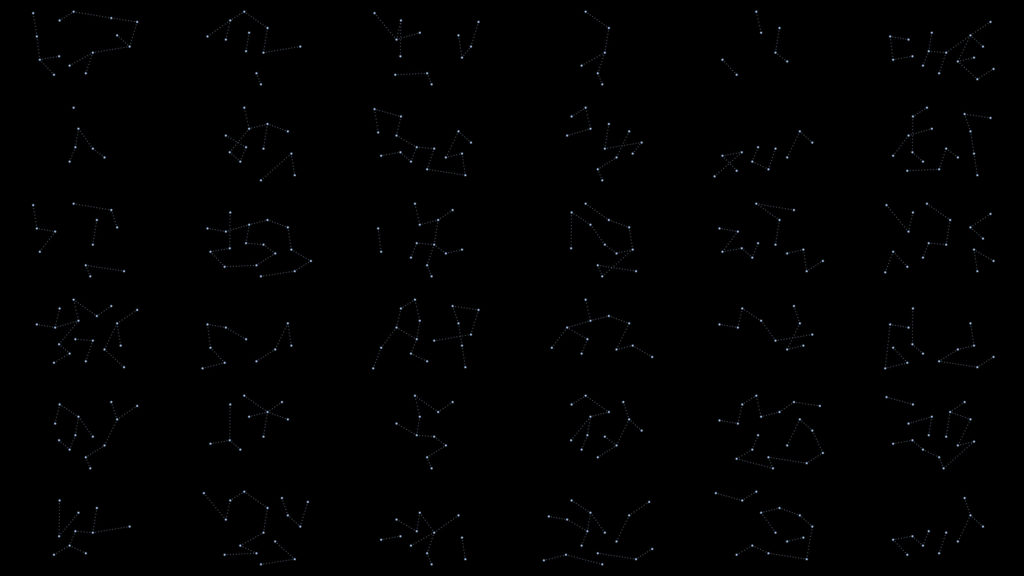
And, you know me and stargate symbols, so I had to do a little extra, too. When the show was first on, I remember it was speculated by myself and others that these digital stargates could, theoretically, show any symbol imaginable on them, so if one was brought from the Pegasus galaxy to the Milky Way, it would display the Milky Way symbols instead of the normal ones. We never saw this in the show (though there was only one time we would, the series finalé, “Enemy at the Gate,” and there was enough going on that I can forgive the production designers glossing over that detail), but it was a notion that always appealed to me.
I went back to the original constellations the 38 original stargate symbols were based on (using this piece of production art3Local Mirror for cases where the glyph and the official constellation didn’t match perfectly) and drew them out using the same lines-and-dots I used to model the Superglyph (I momentarily considered trying to make the Milky Way symbols using the Superglyph, but immediately decided there was no way that would work).
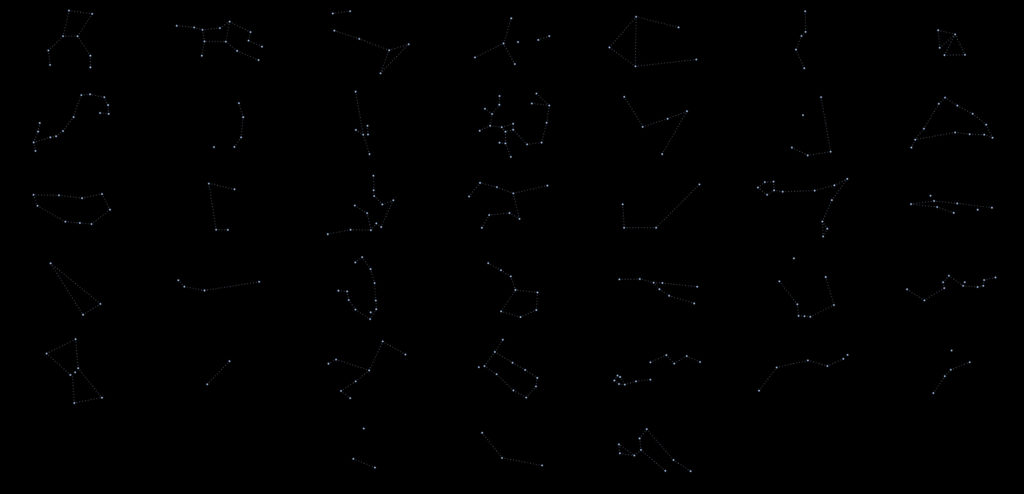
I laid them out on the stargate ring in an “idle” configuration. Since there are 39 symbols on a Milky Way stargate but only 36 glyphs on a Pegasus stargate, I had to make a compromise. I decided to keep the order the same, and to use the point of origin (halfway between chevrons two and three on an Idle Pegasus ‘gate) as the landmark, counting down from 39 counterclockwise and up from one clockwise. I placed the “seam” at the bottom of the ‘gate, where it would typically be hidden by the floor or ground.
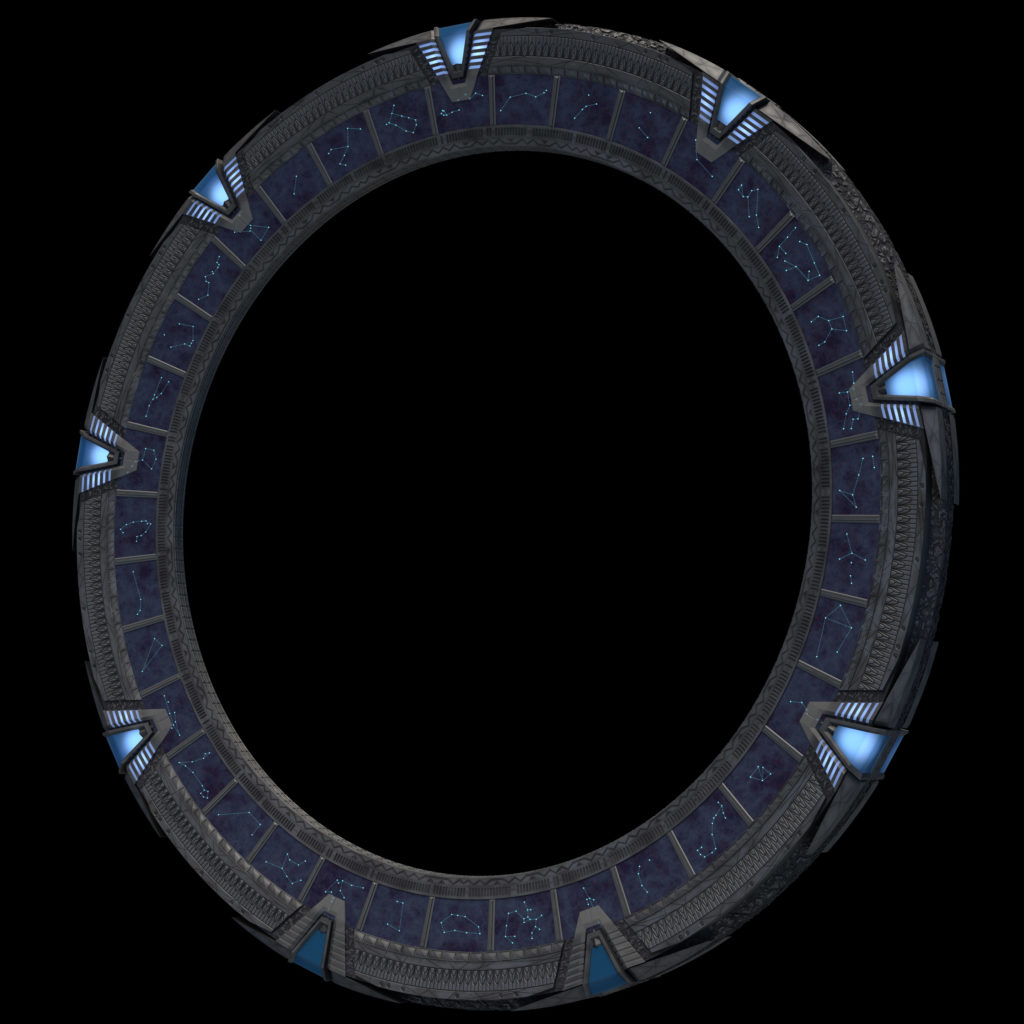
And, of course, point-of-origin symbols. I’m including the Superglyph, so anyone can make all the alternate symbols they want in the style of the original Pegasus galaxy glyphs quickly and easily, as well as a selection of symbols. Most are based on the first CG ‘gate used during the show (and also the last, and intermittently in-between, depending on the VFX studio doing a given episode), which used a mix of correct symbols, slightly different symbols, and completely new symbols, including several repeats (I suspect when the CG artists collected their reference, the Pegasus glyphs hadn’t been finalized, since the new symbols were all Superglyph-compatible). I arbitrarily assigned several of these to points of interest in the Pegasus galaxy I might like to show in a render someday. I also made two symbols modified from existing glyphs that were, as is tradition, used as ersatz origin symbols on off-world ‘gates during the show, and one based on a terrible internet meme, to amuse myself.
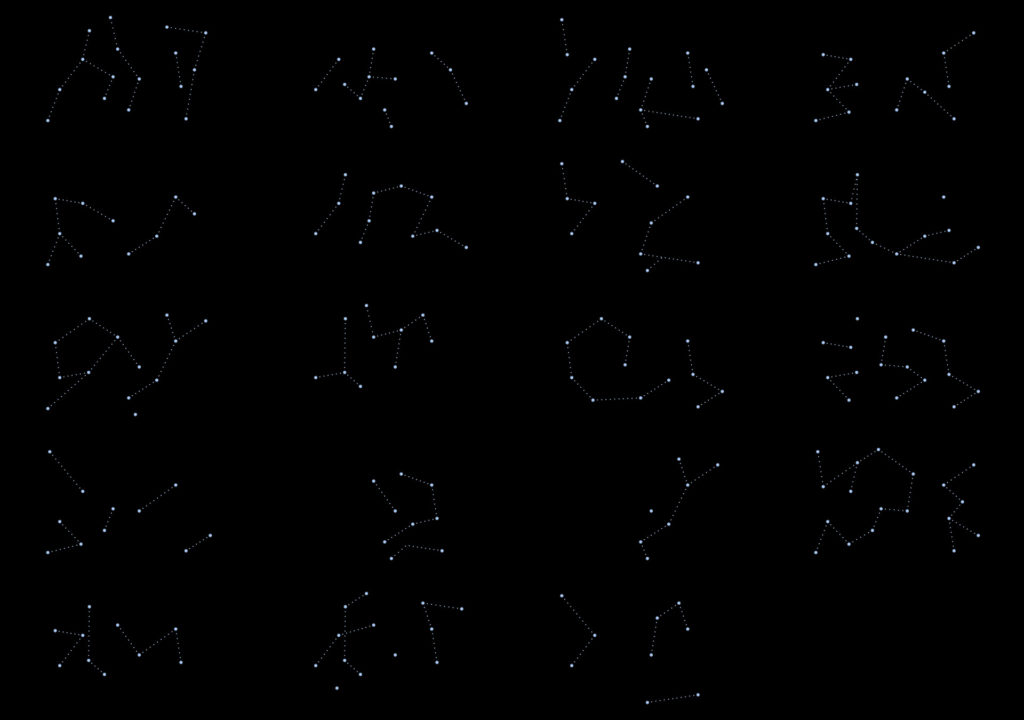
Of course, there are also dialing setup scenes included. Lightwave users, you’ve lucked out, because of the way the Pegasus ‘gate works, there’s no tedious animation and tweening to do, simply use the Replace Object function on the appropriate symbols to enter any address you like. Just don’t forget to pick a new origin symbol if you’re not on Atlantis.
The model is available for download at the top of this post. In addition to the canonical Lightwave 2020 version of the model, there are conversions to FBX and OBJ format for those of you who don’t use Lightwave or a Lightwave-compatible program. There’s also a texture reference package which includes renders and surface settings of the PBR procedural surface I used on the model to help you achieve the correct look for your conversions. The model and associated files are released under the CC0 Public Domain Declaration. Credit for their use is not required, but is appreciated.
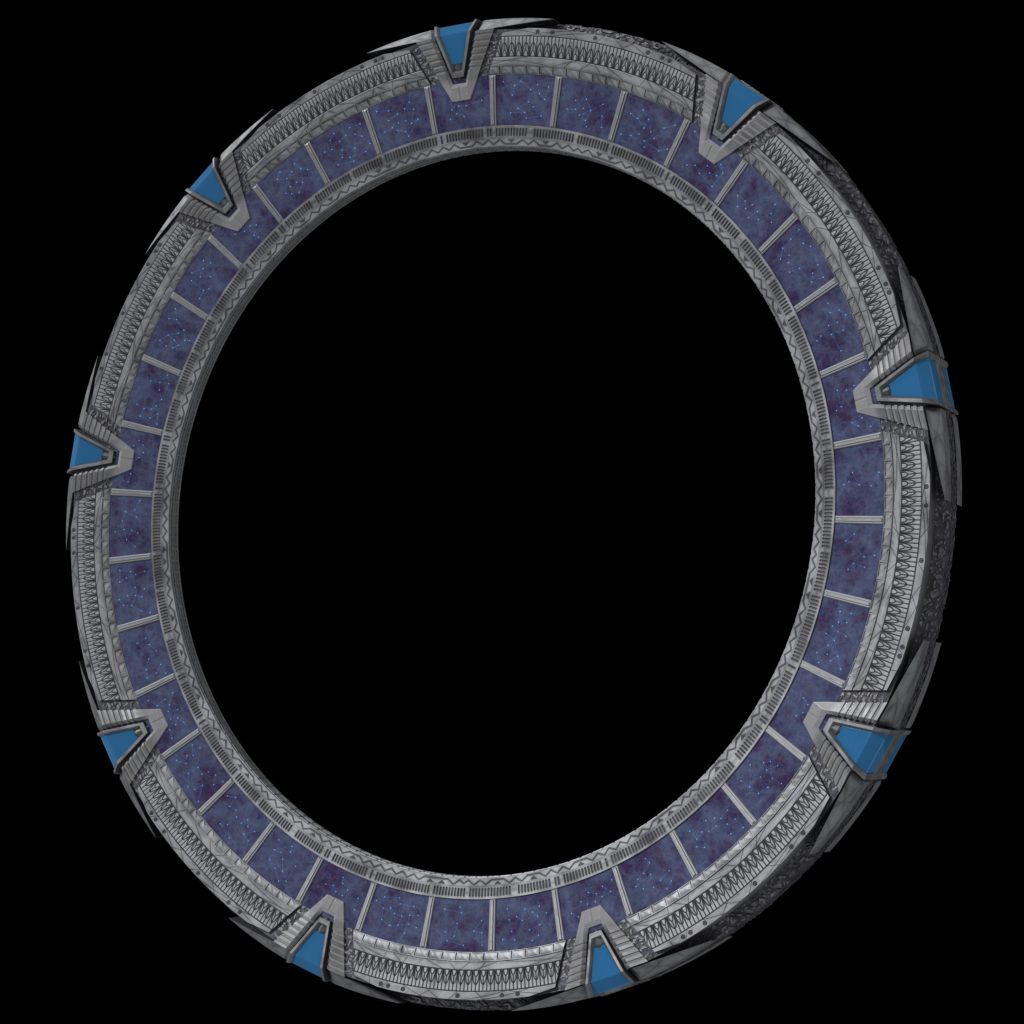
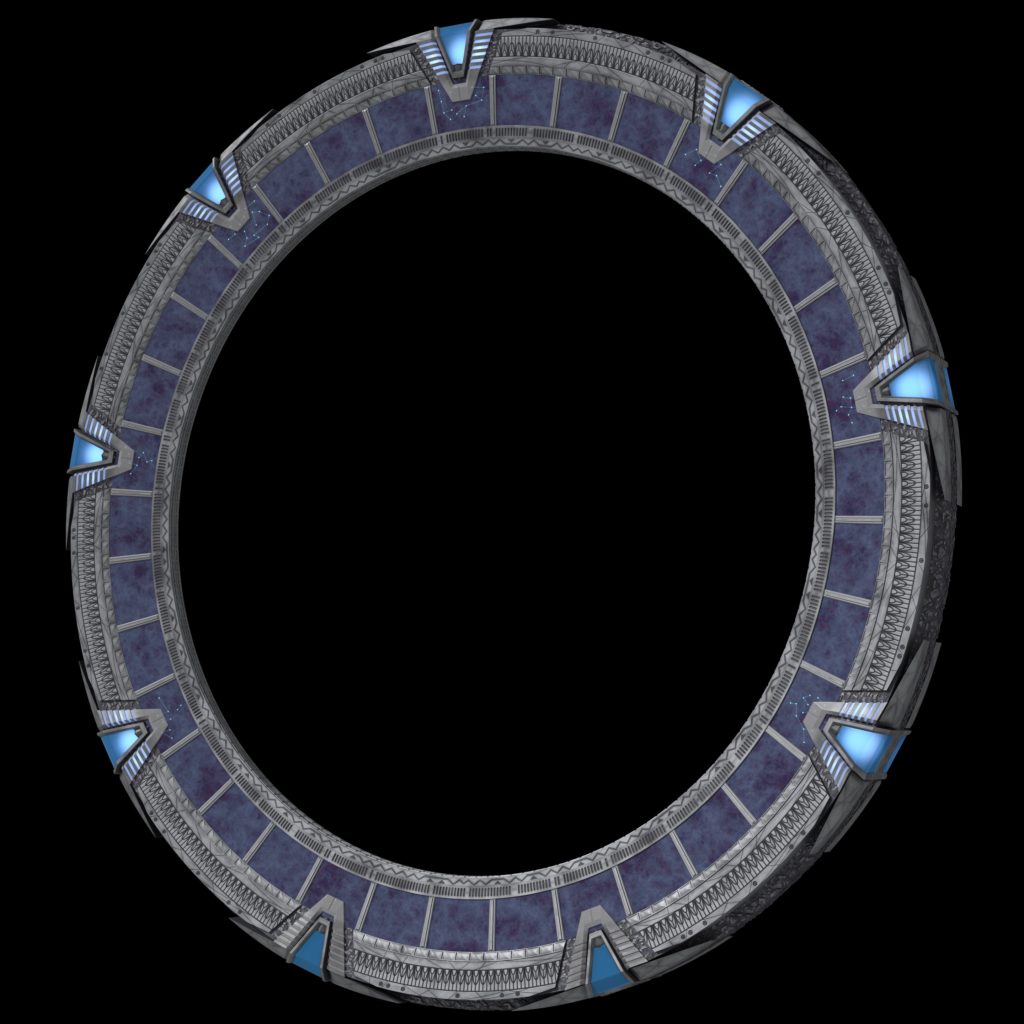
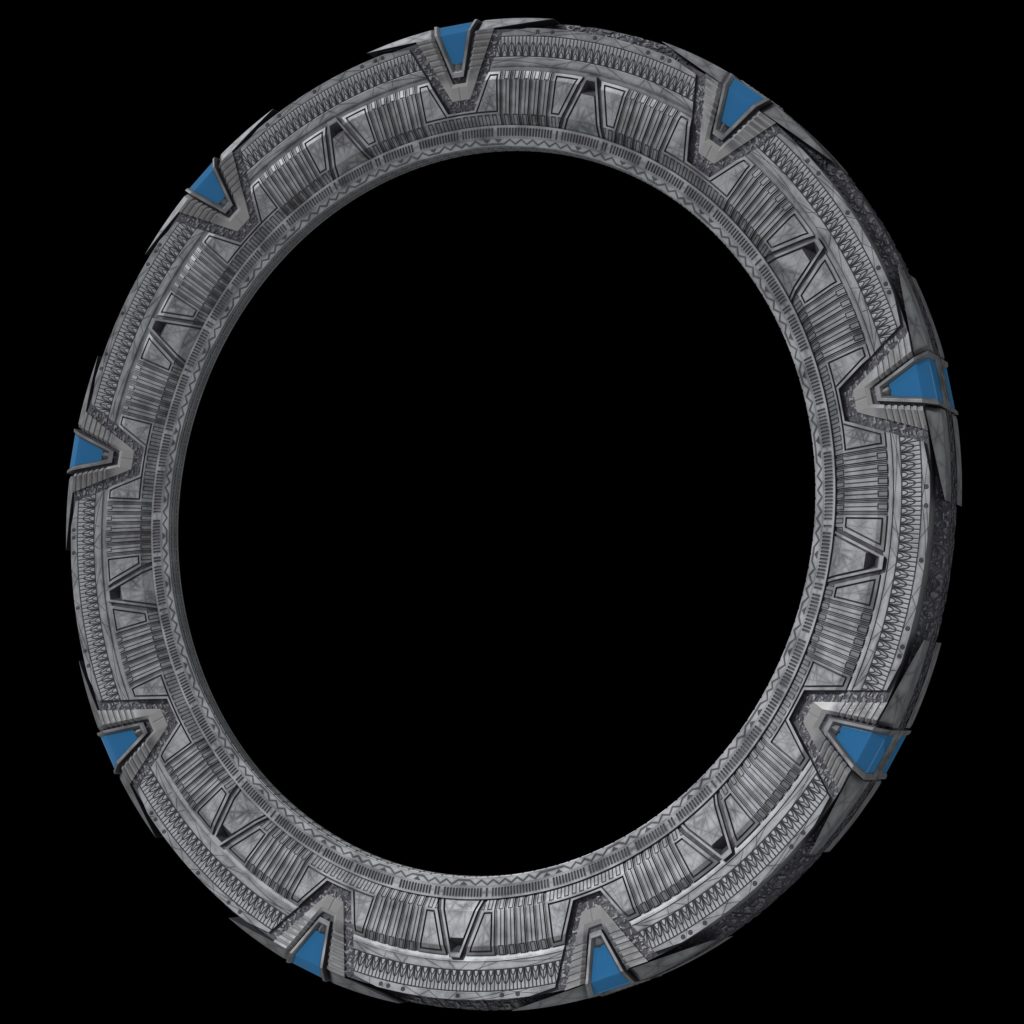
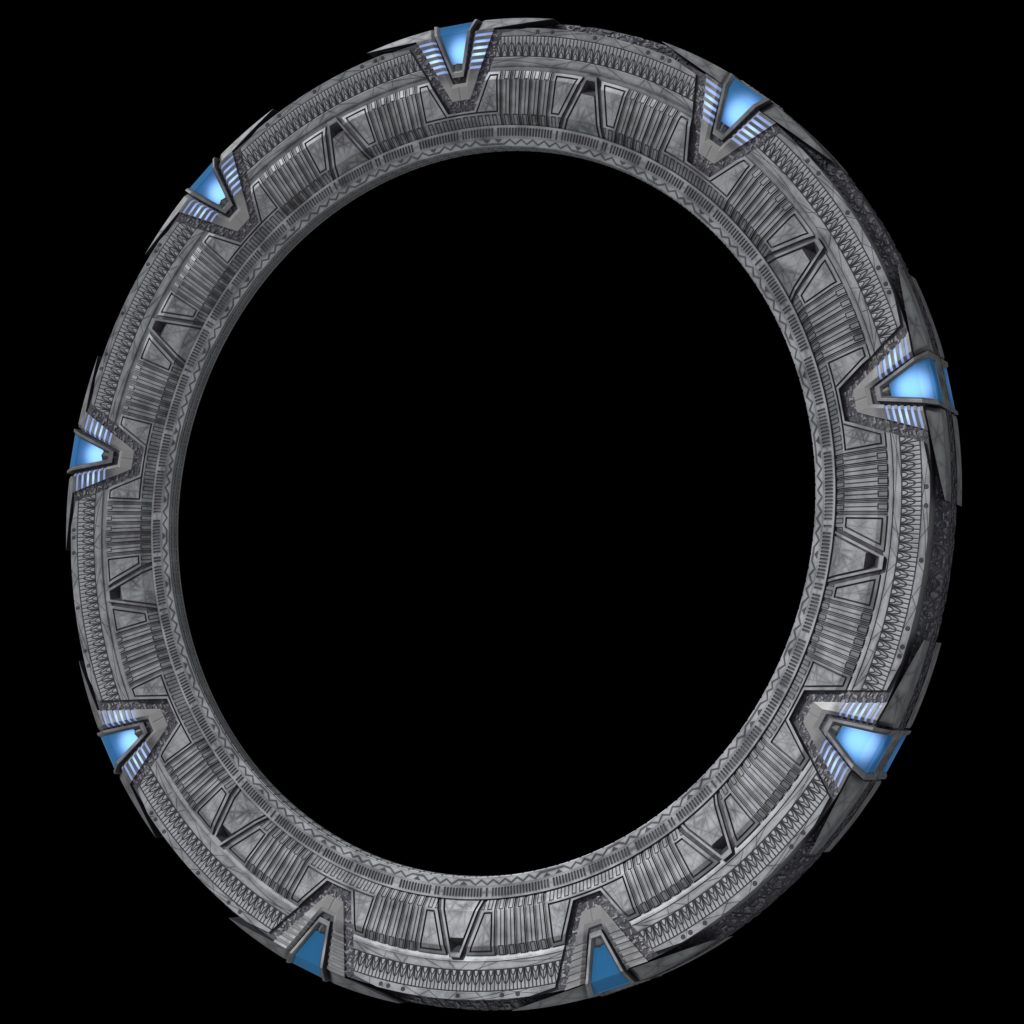
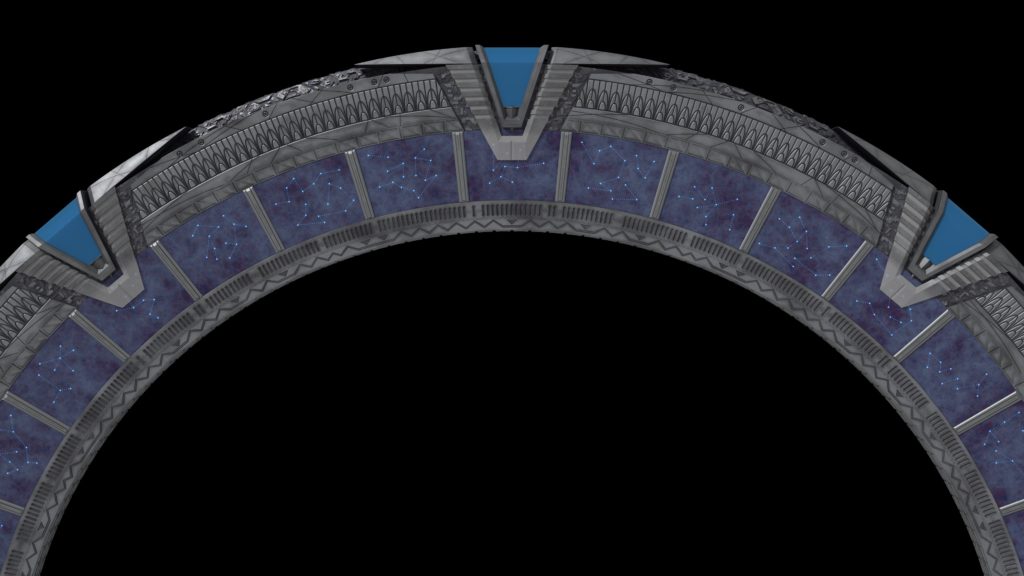
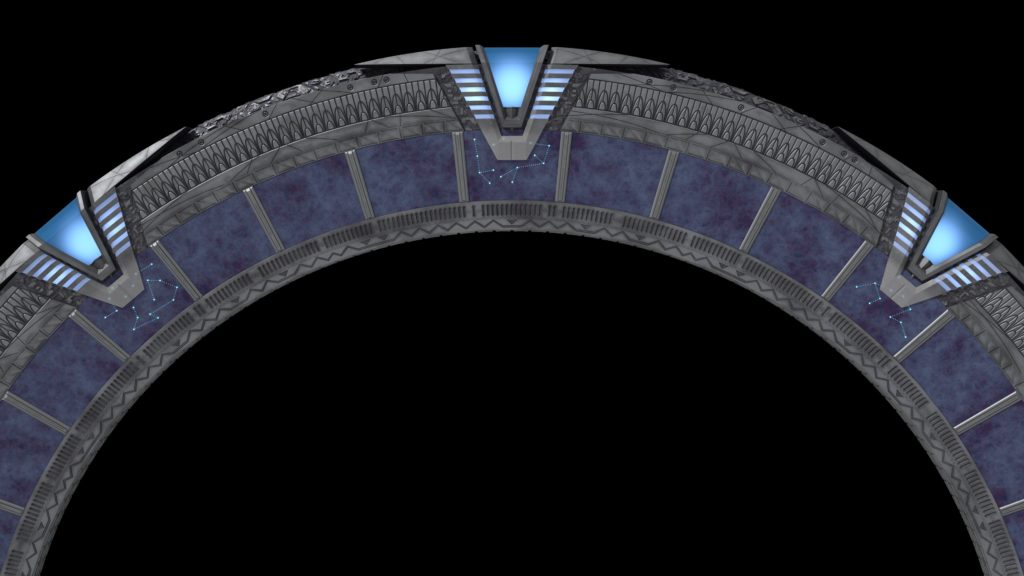
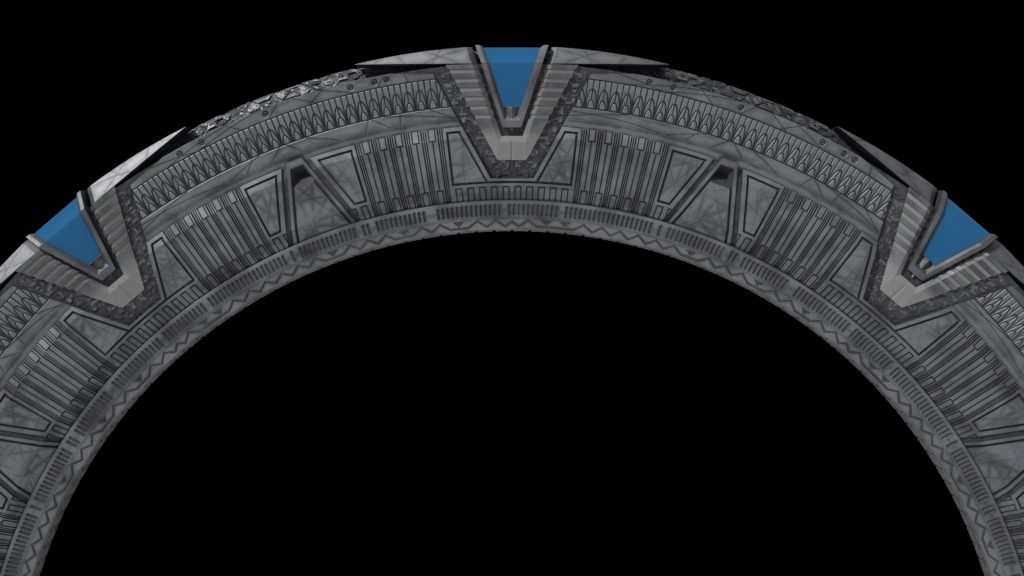
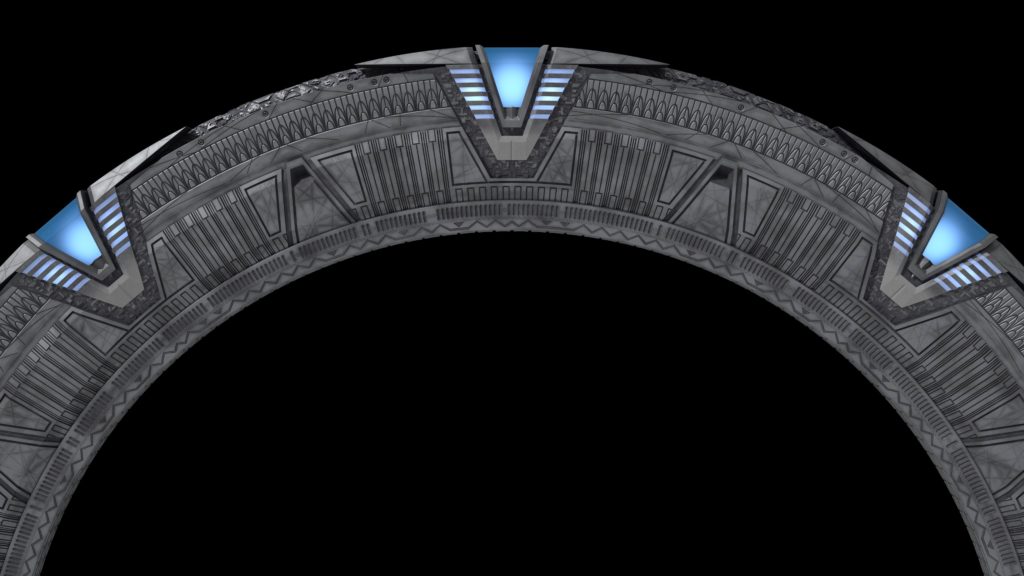
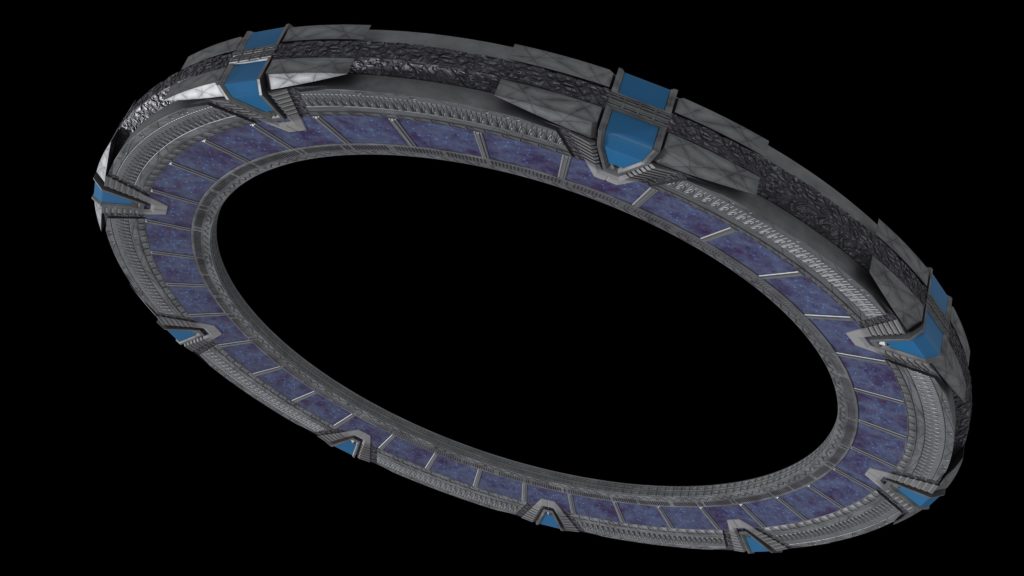
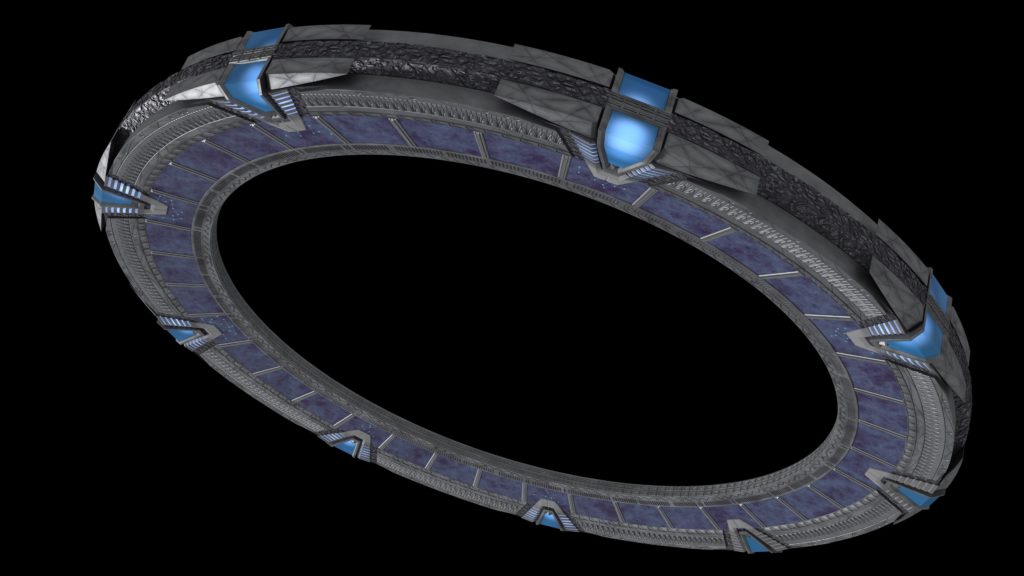
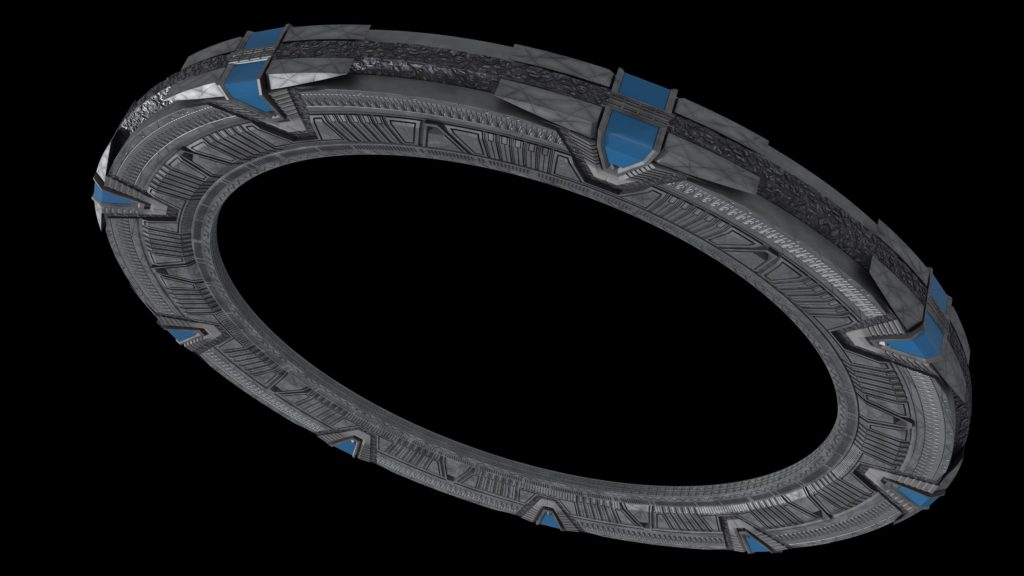
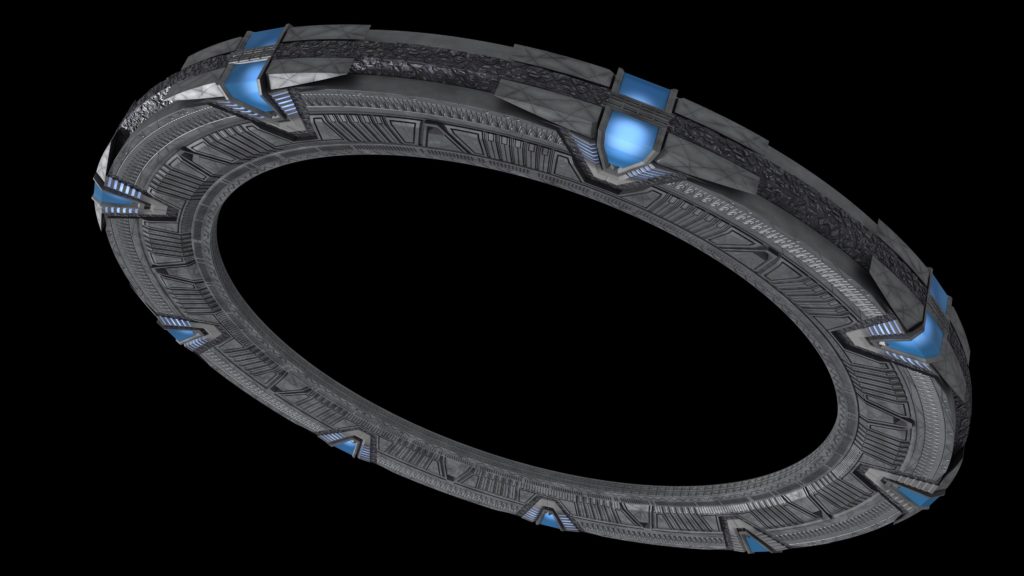
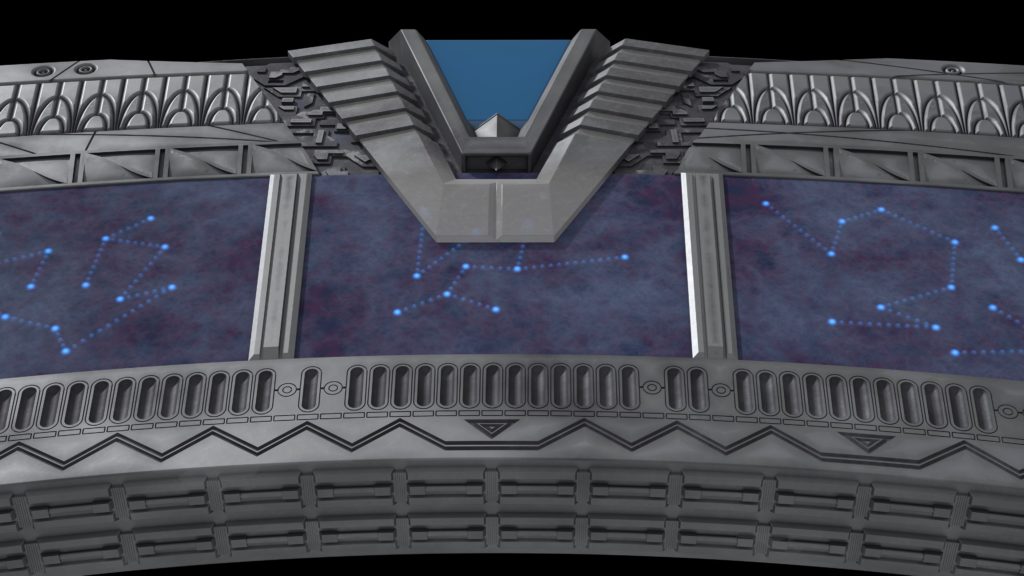
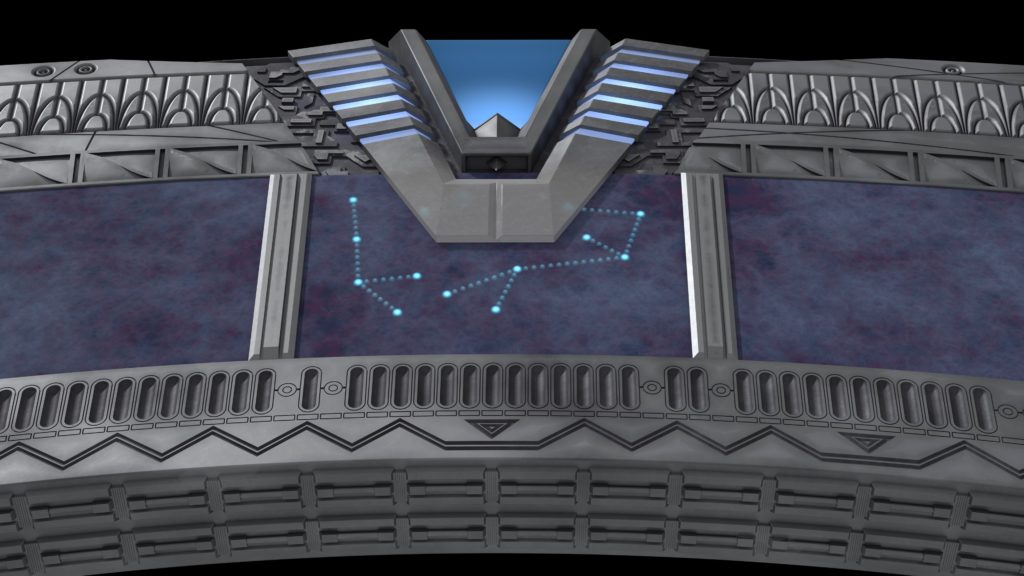
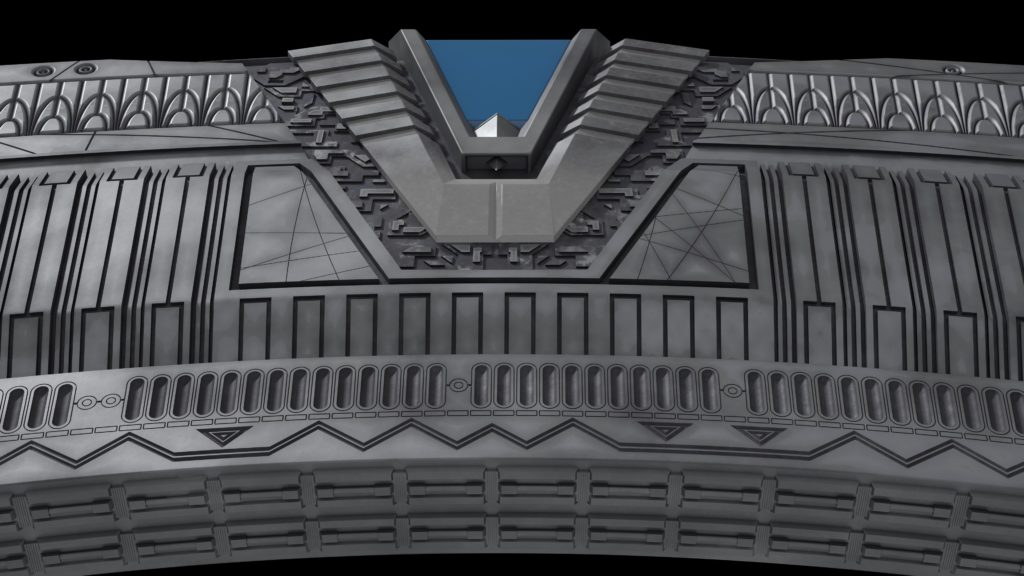
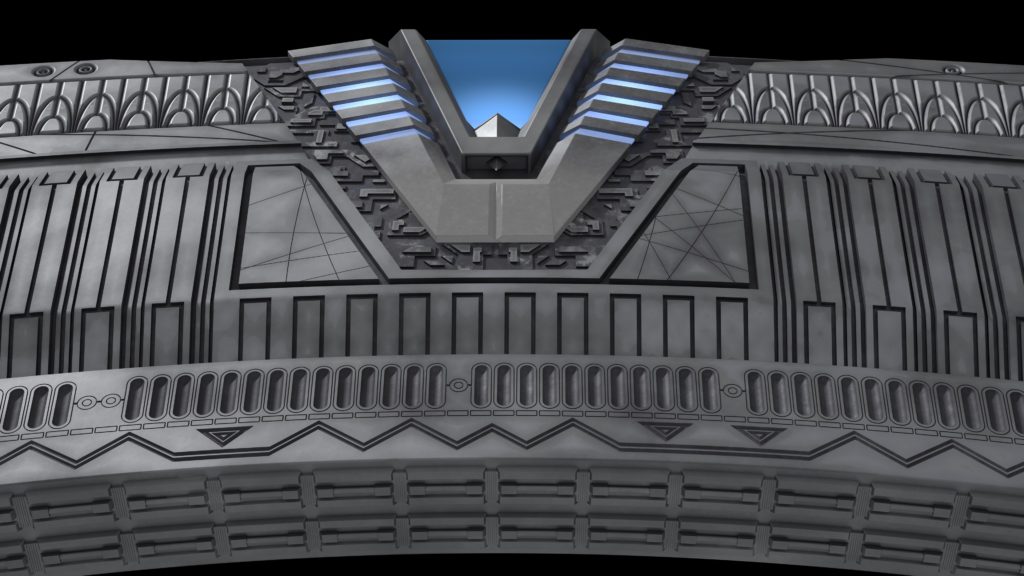
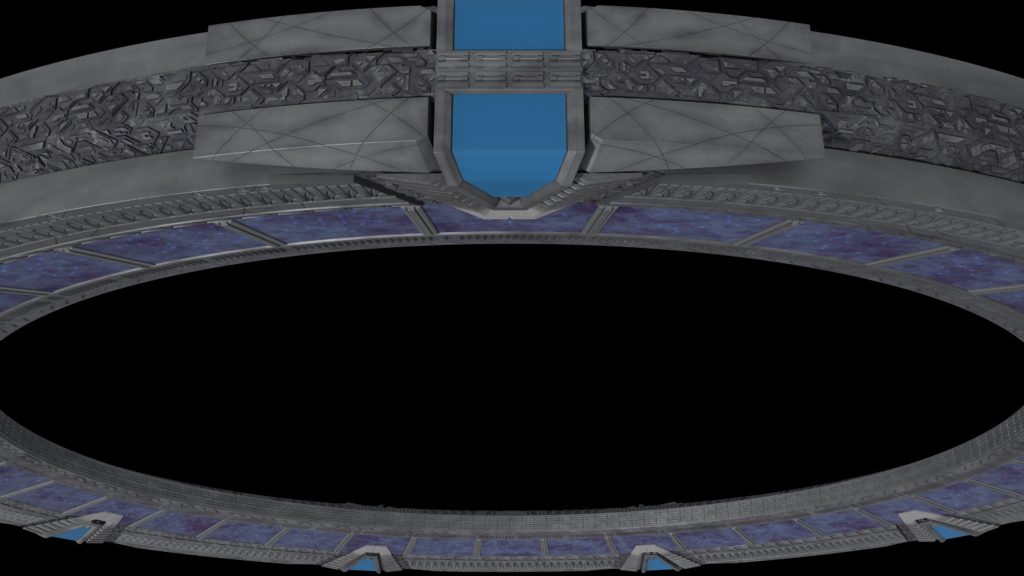
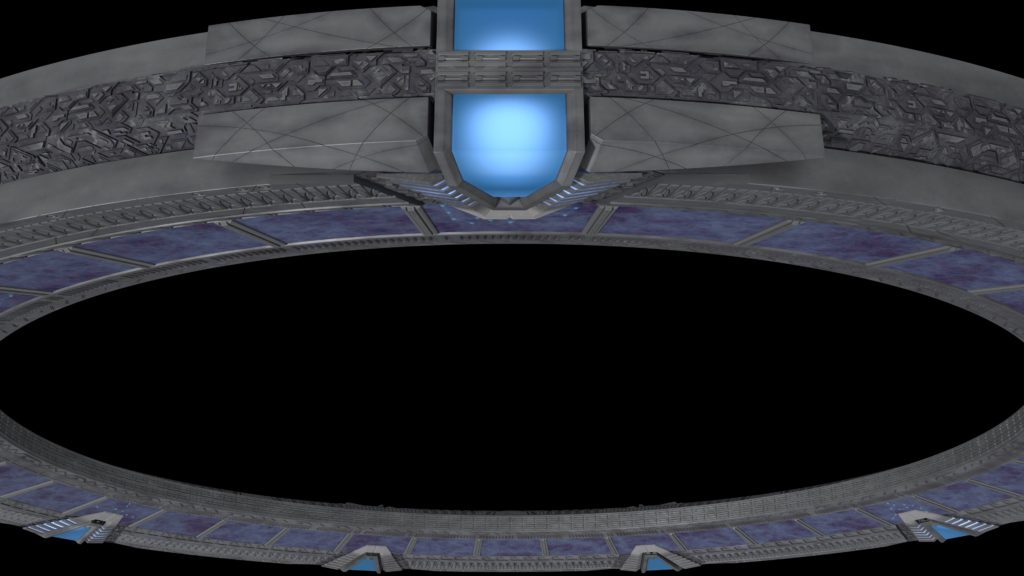
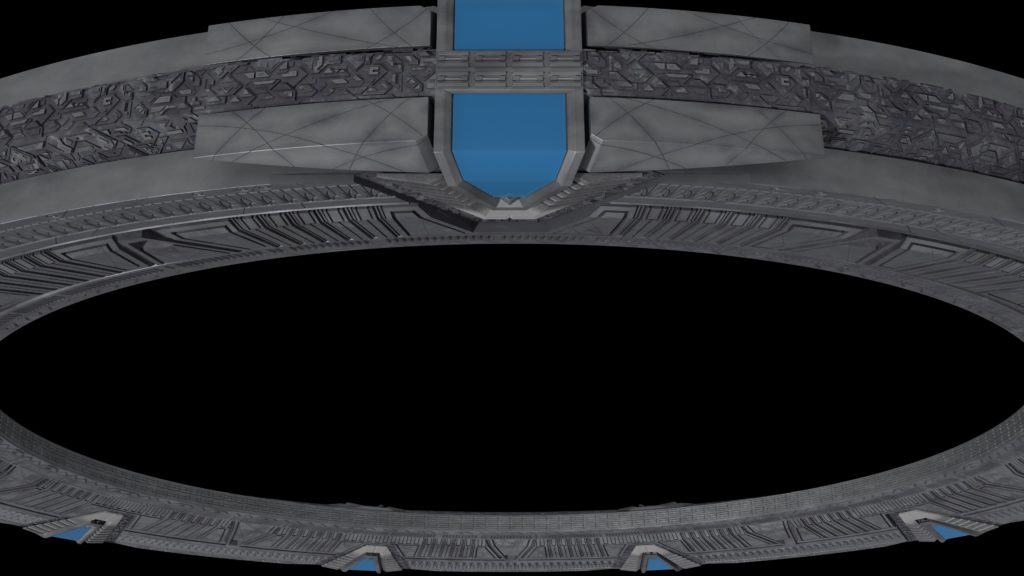
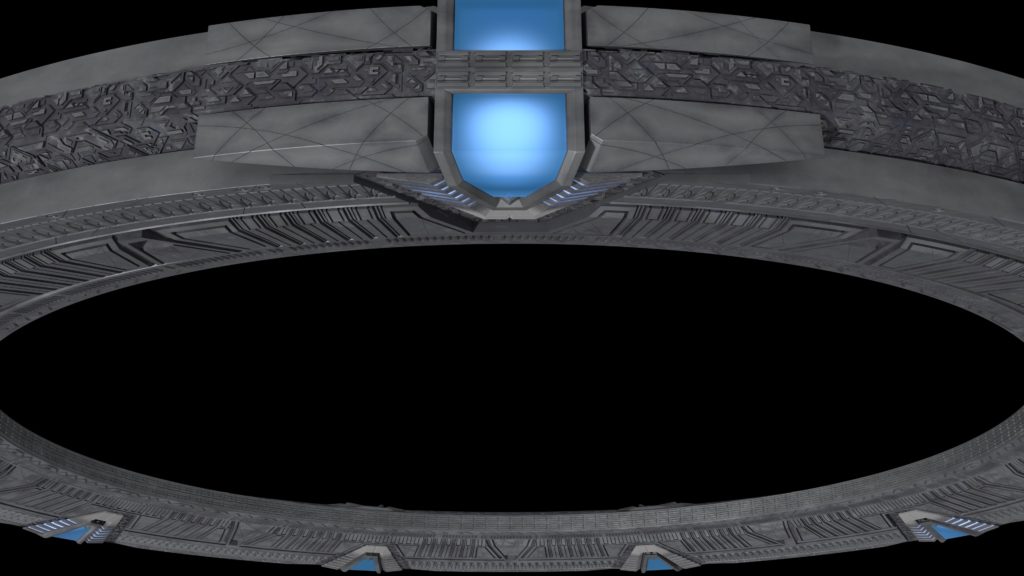
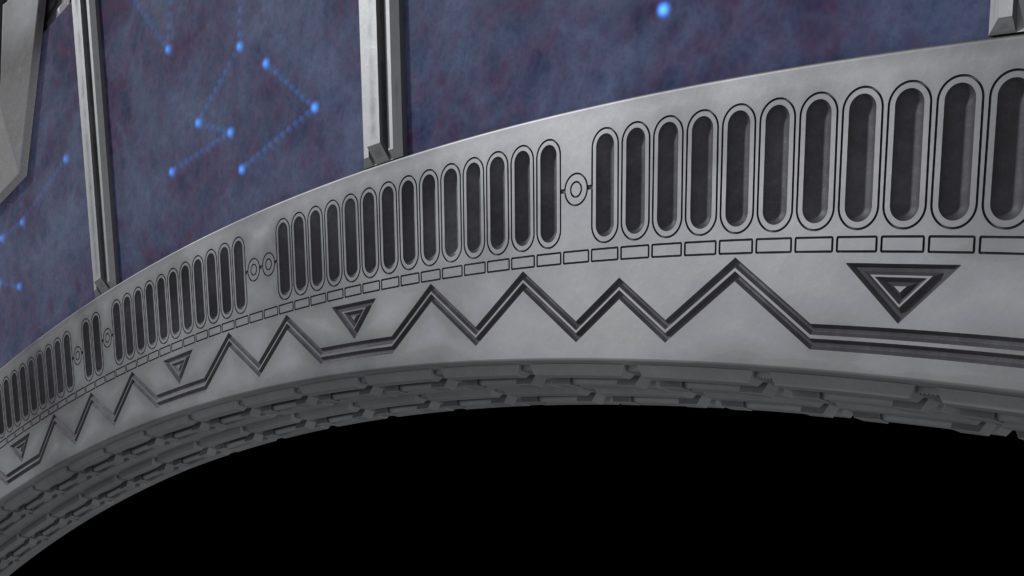
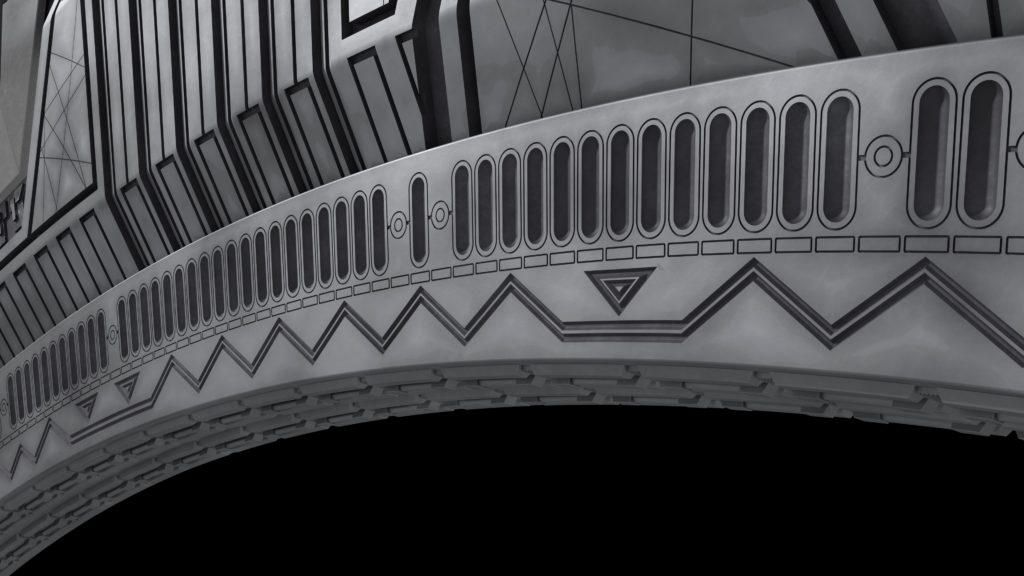
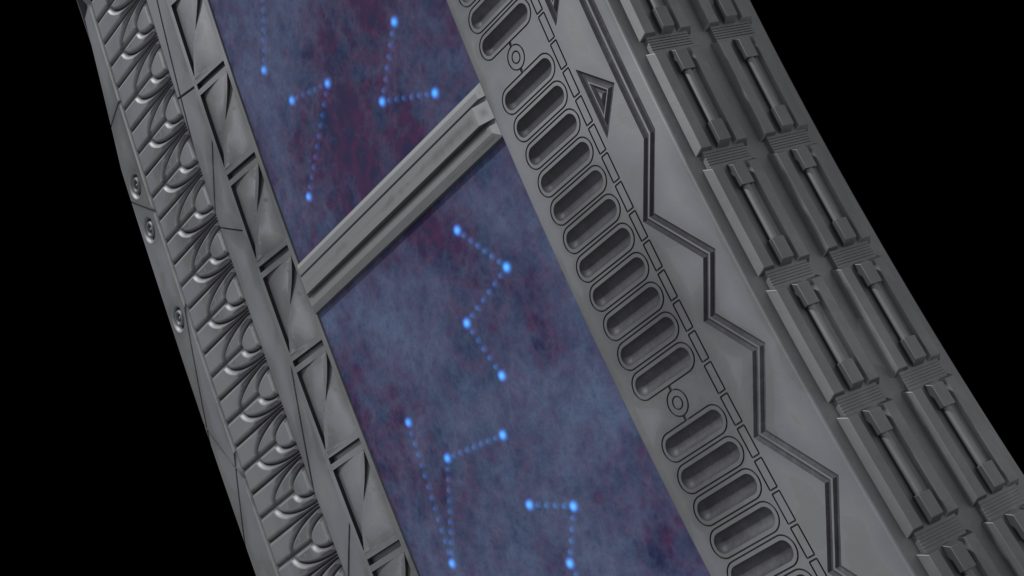
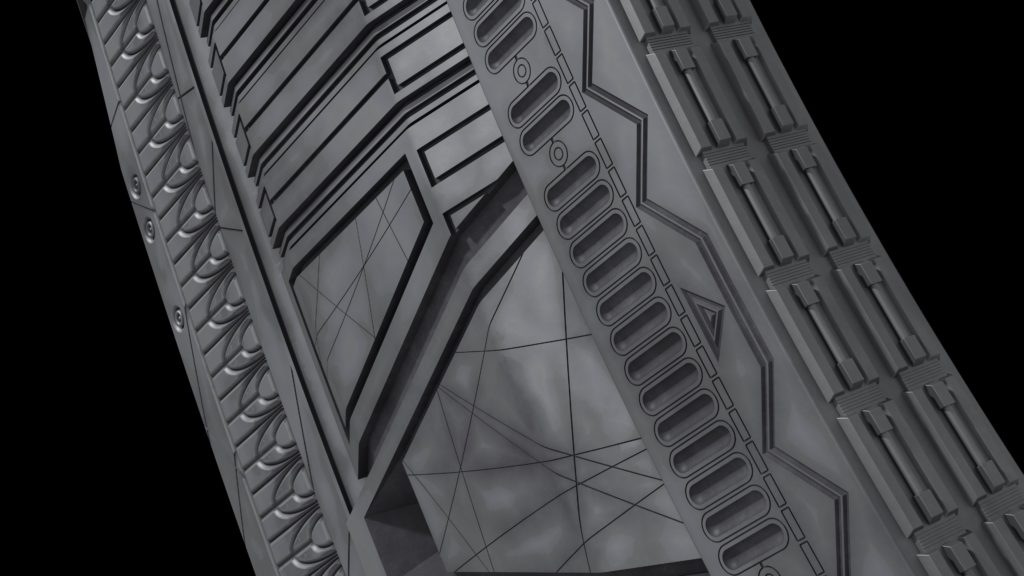
In addition to these still images under neutral lighting, I’ve rendered turntable animations of the model in many different lighting environments from HDRI Haven and HDR Labs, to see how my texturing job responded to a variety of different lighting situations. I’ve also rendered 5K wallpaper versions of the front and back of the stargate in each lighting environment.
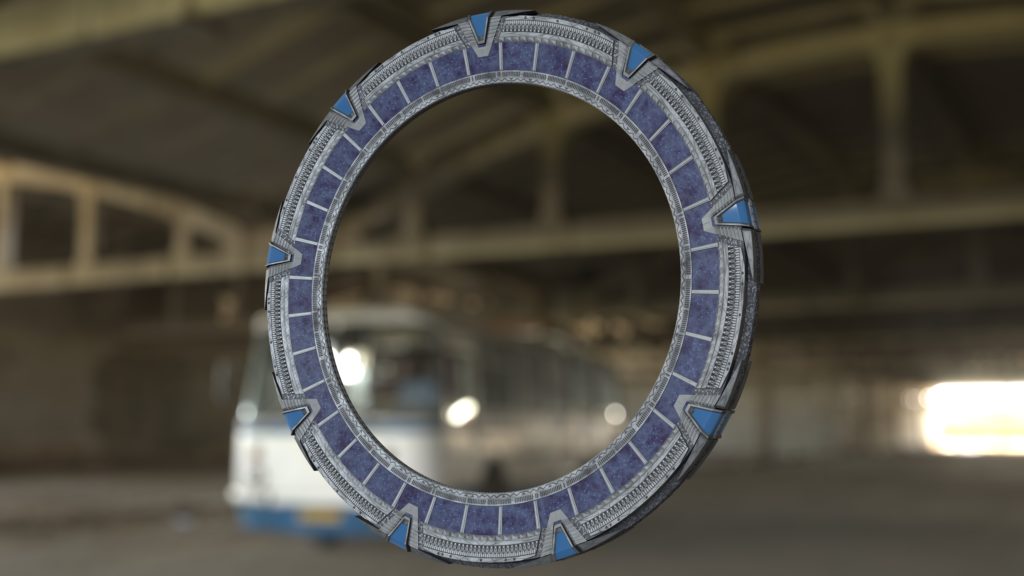
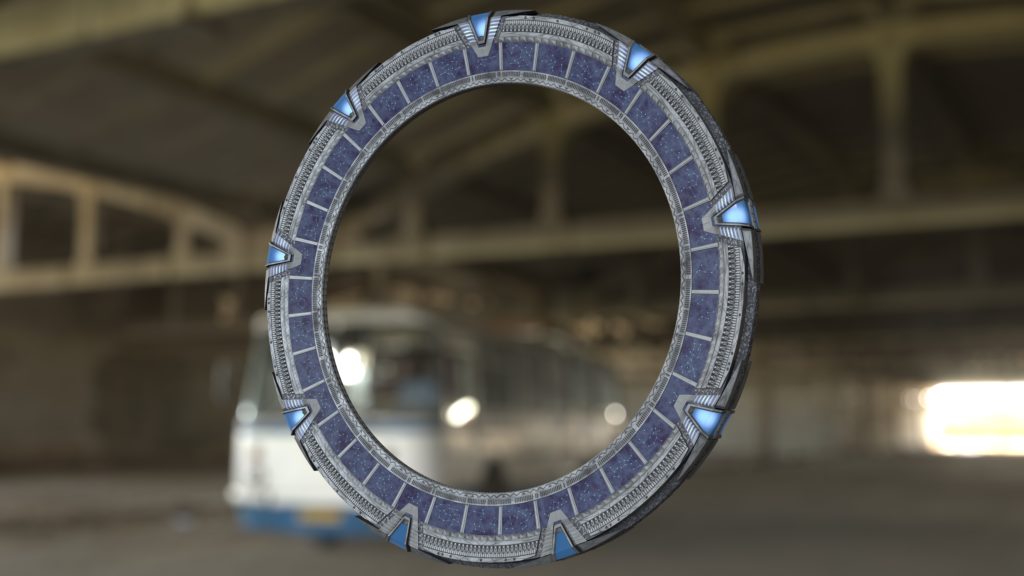
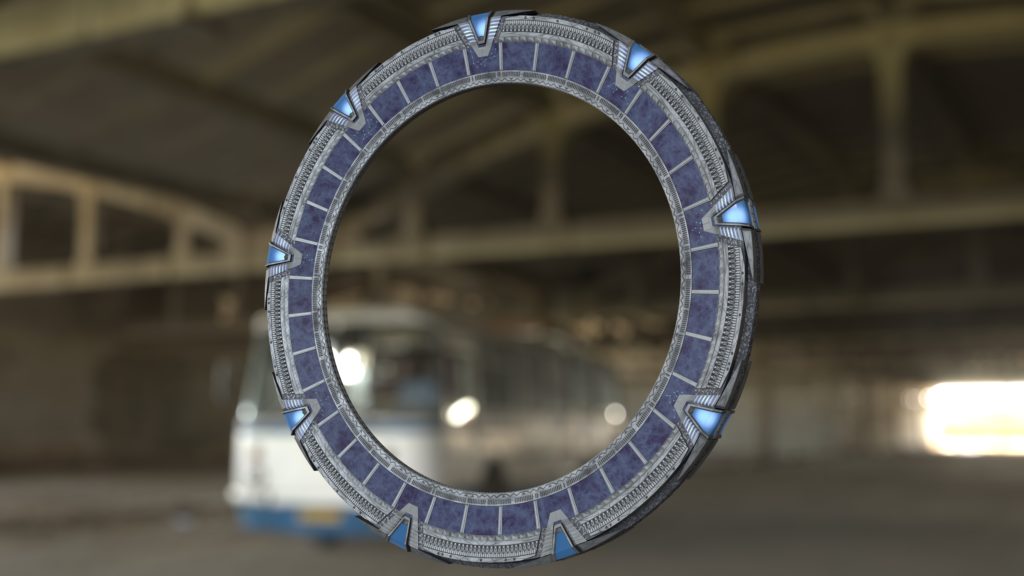
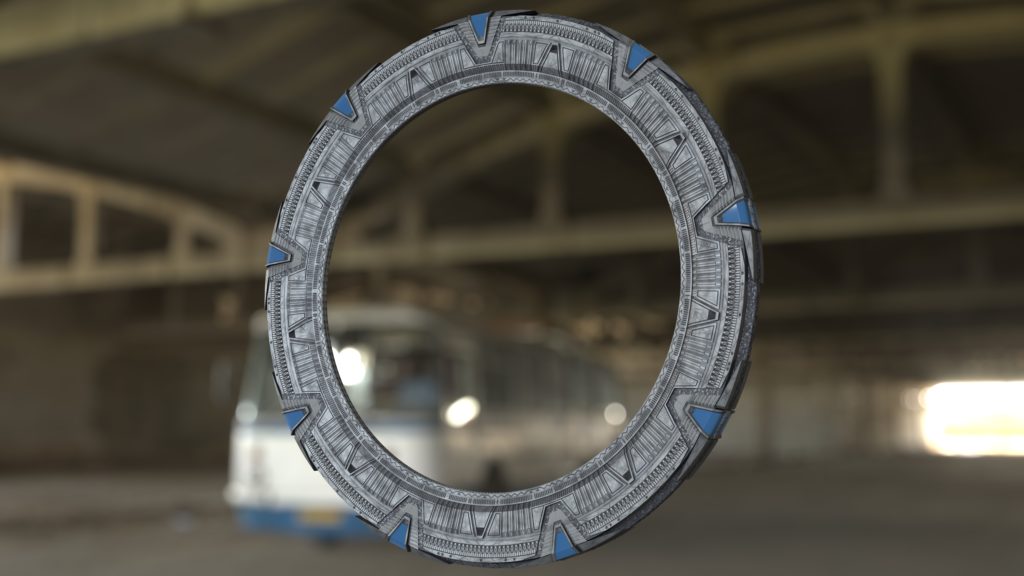
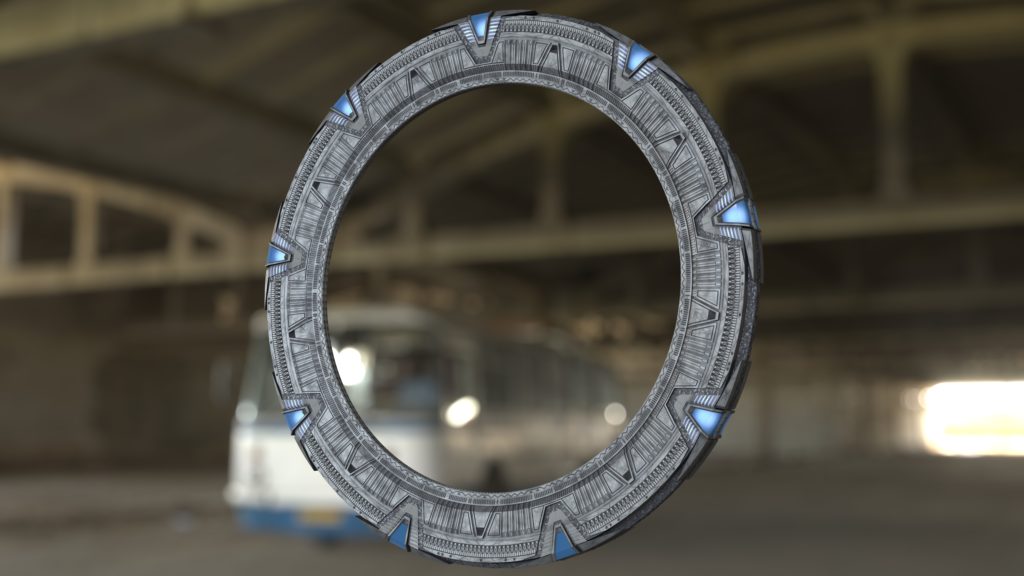
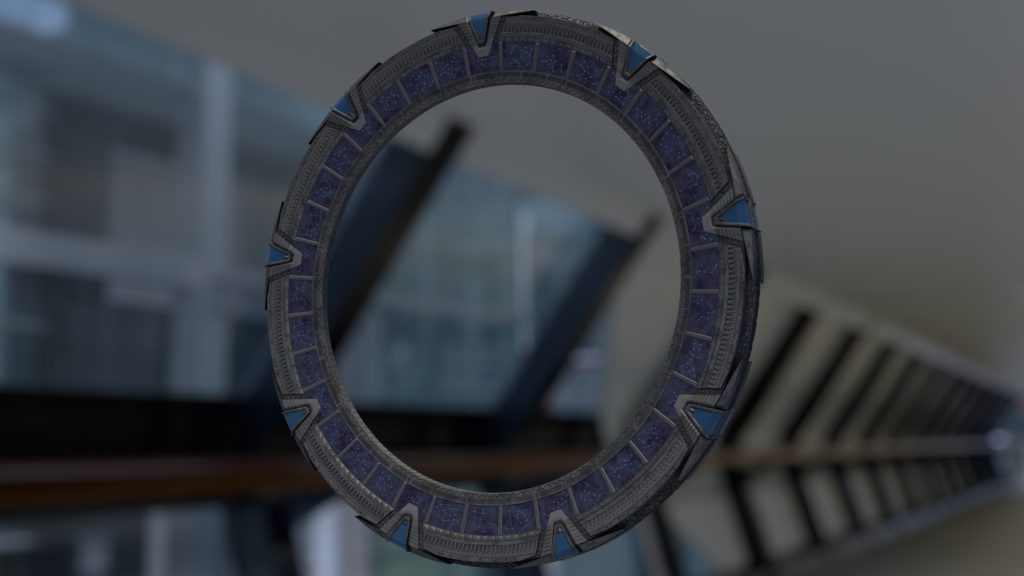
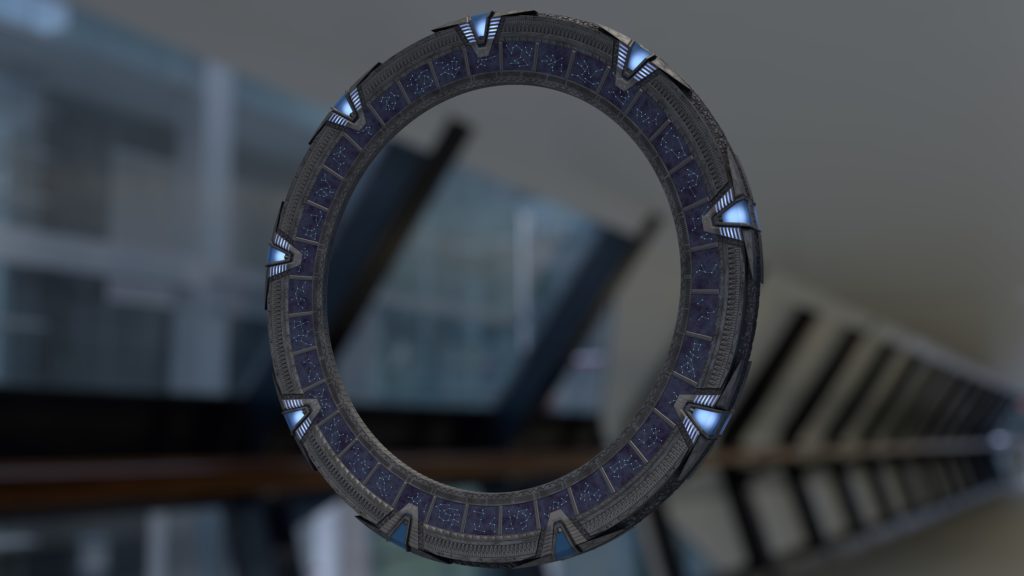
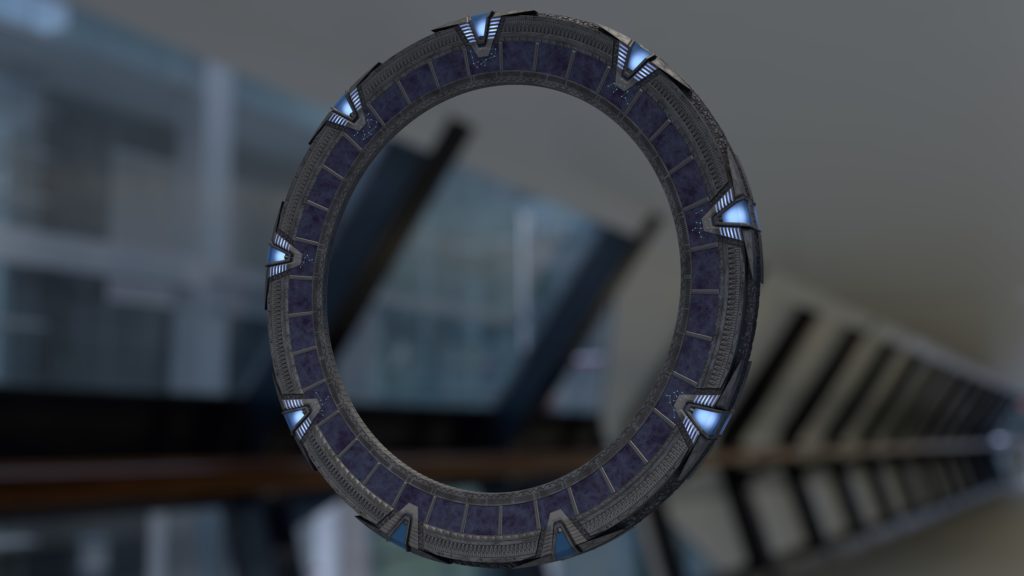
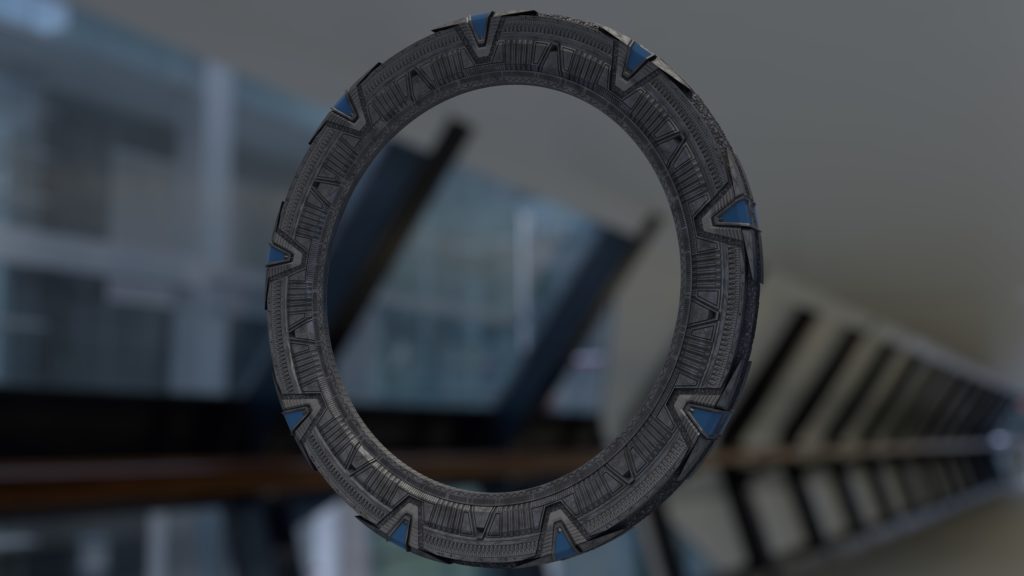
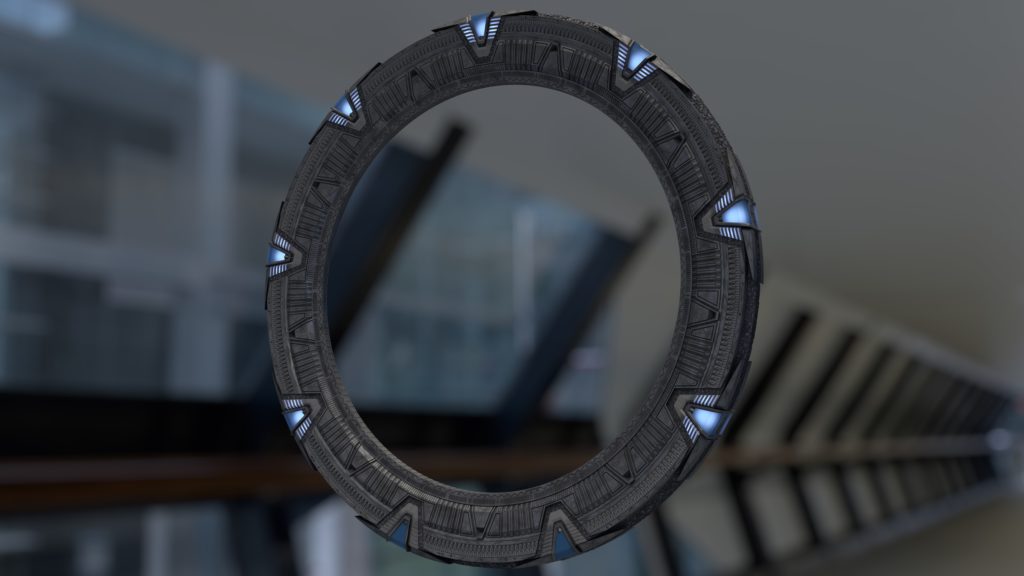
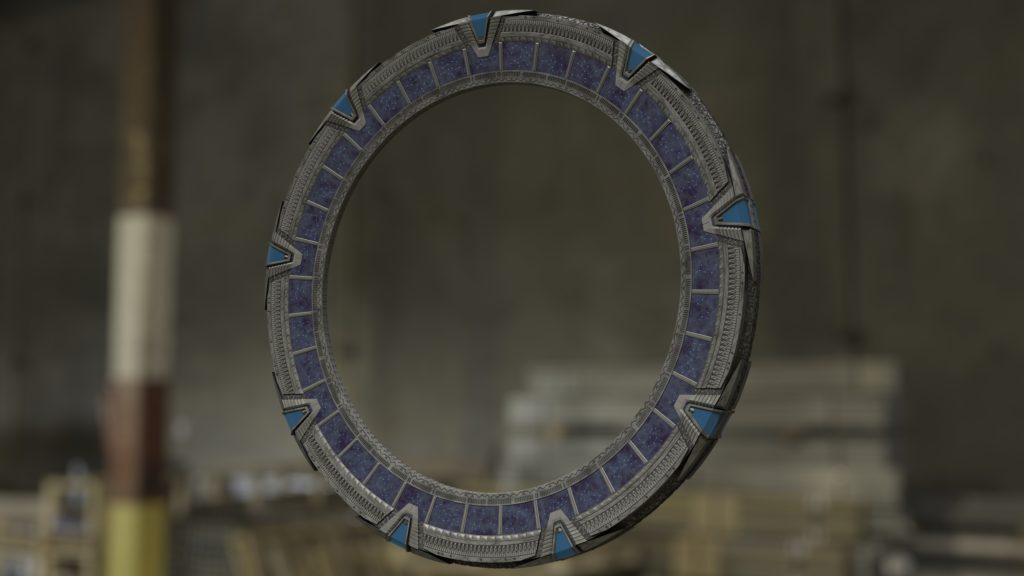
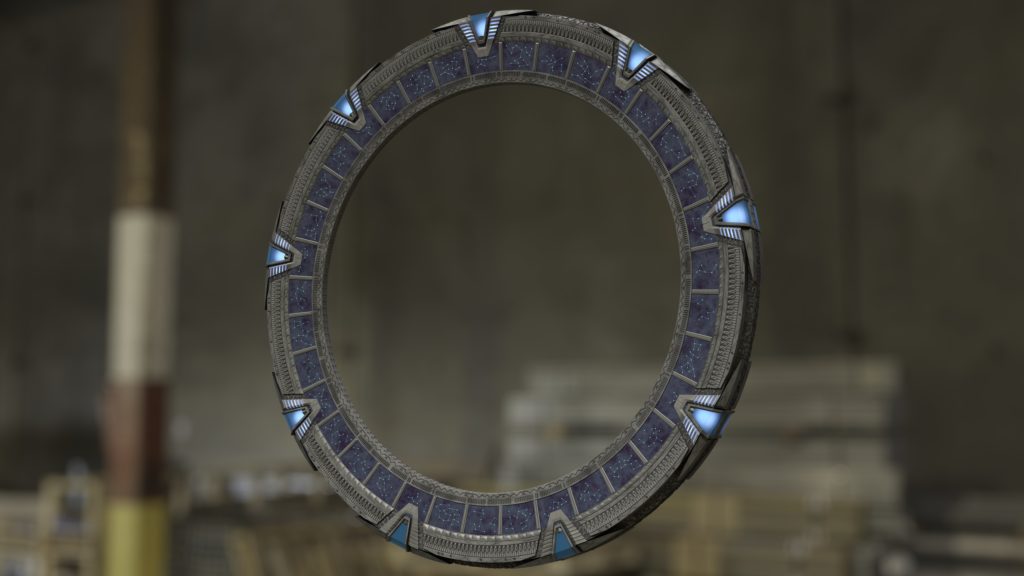
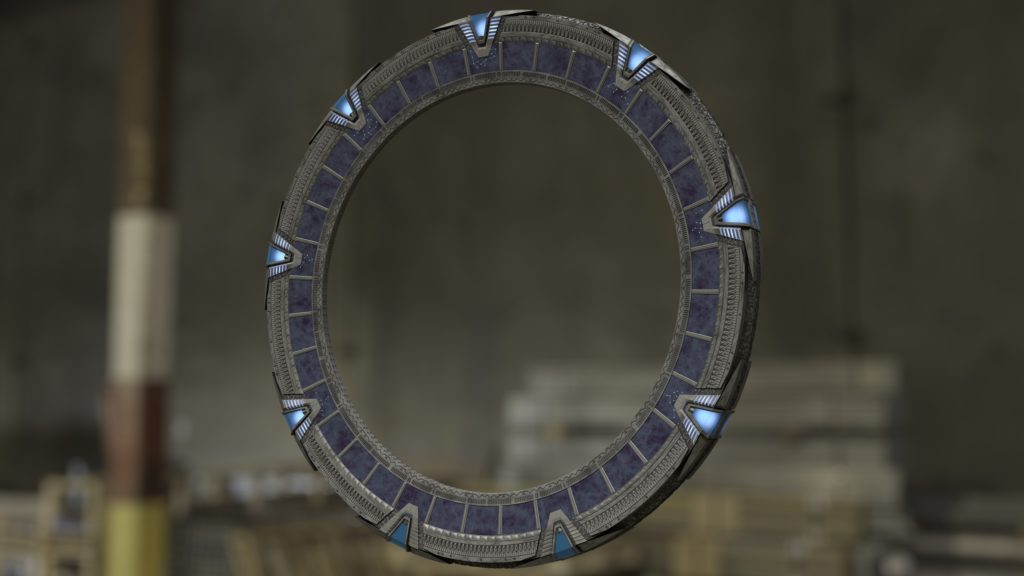
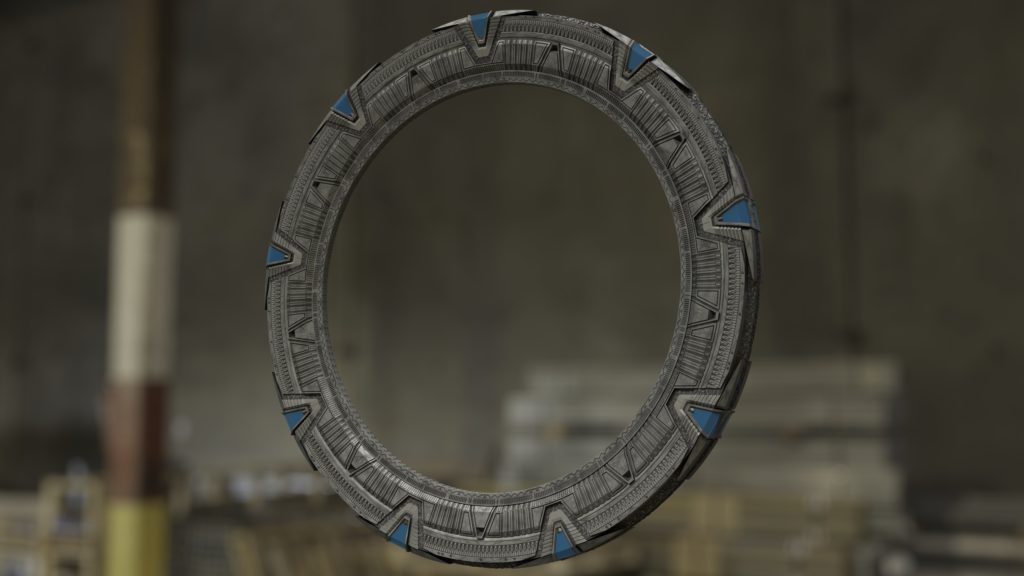
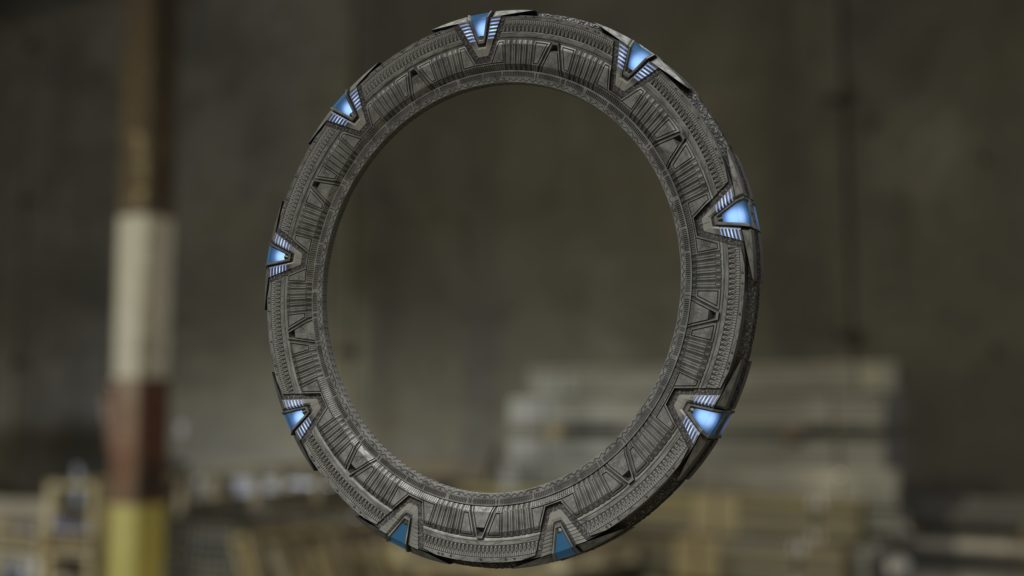
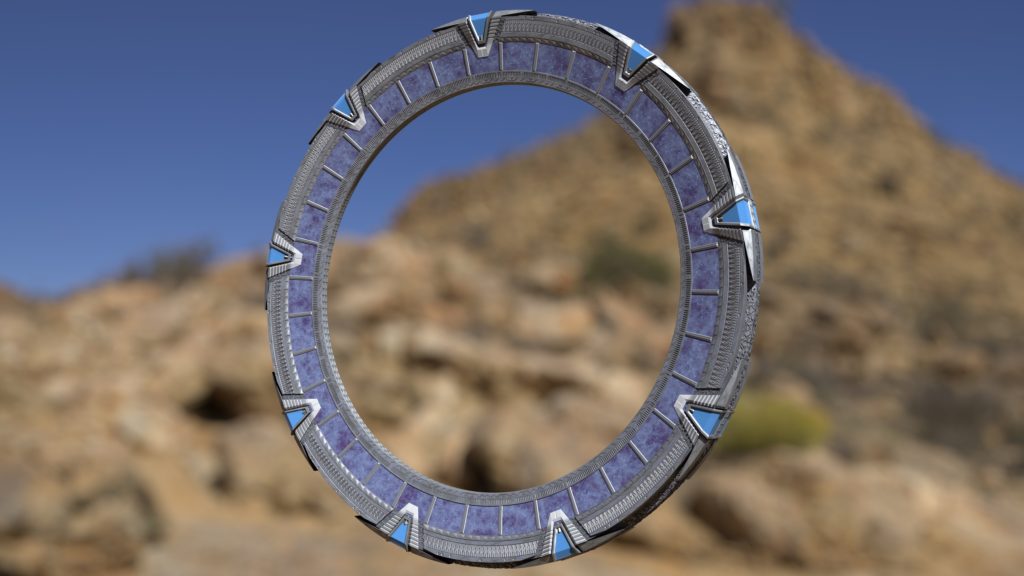
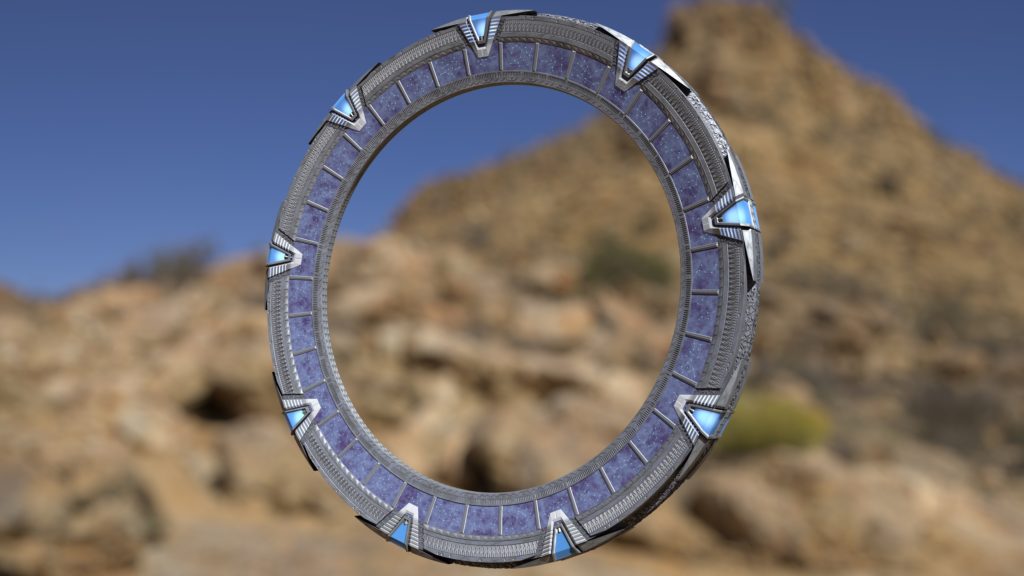
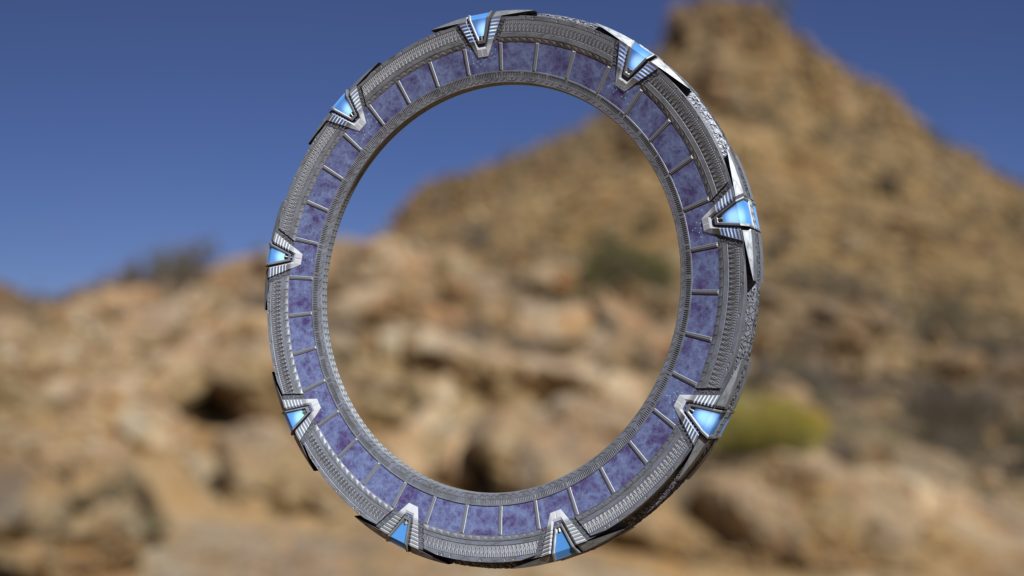
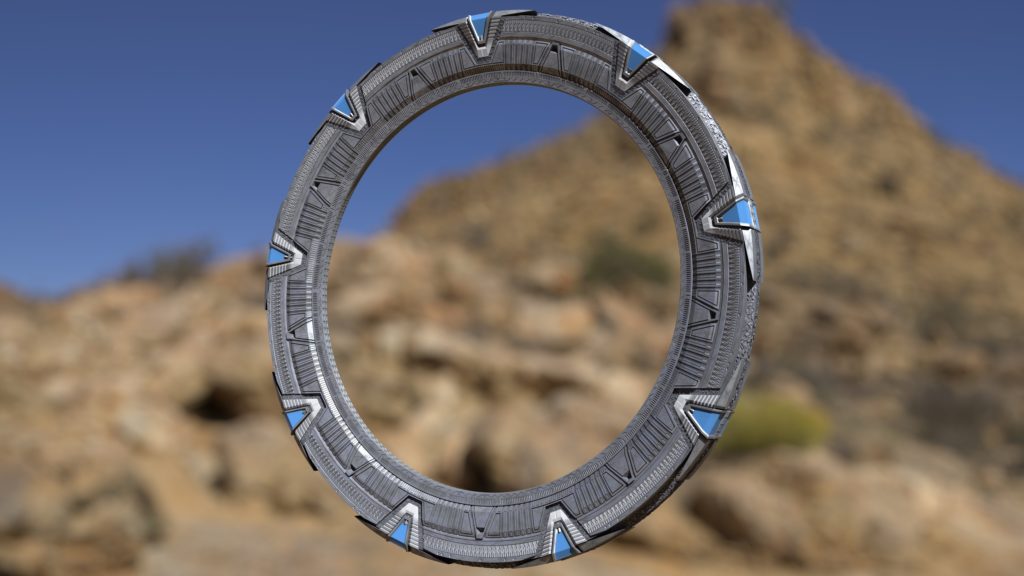
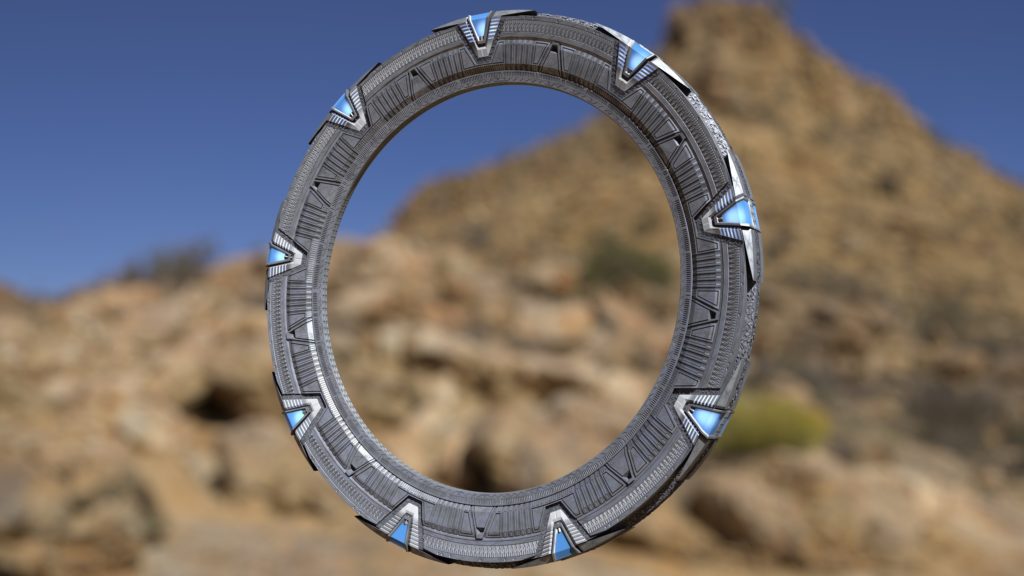
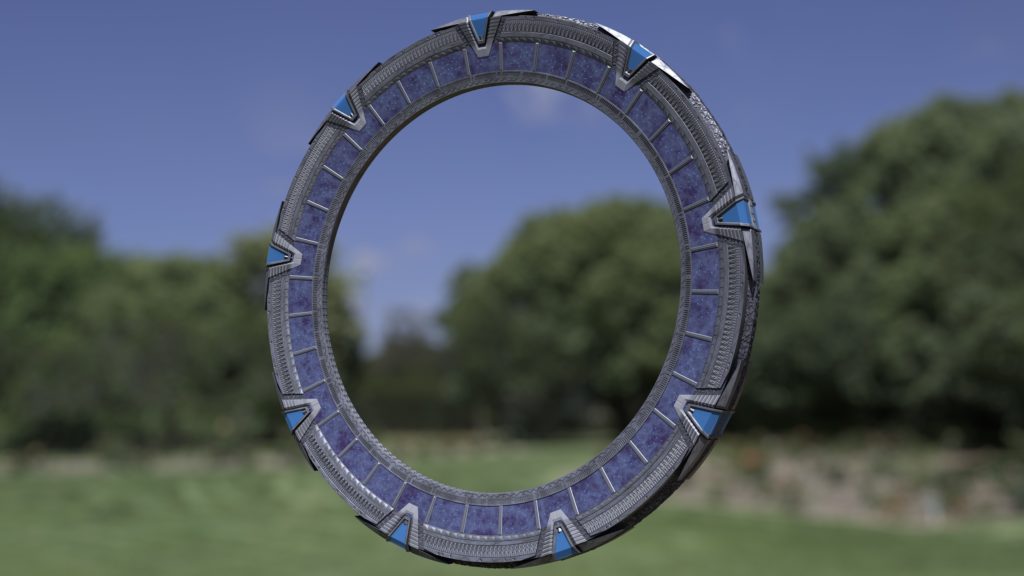
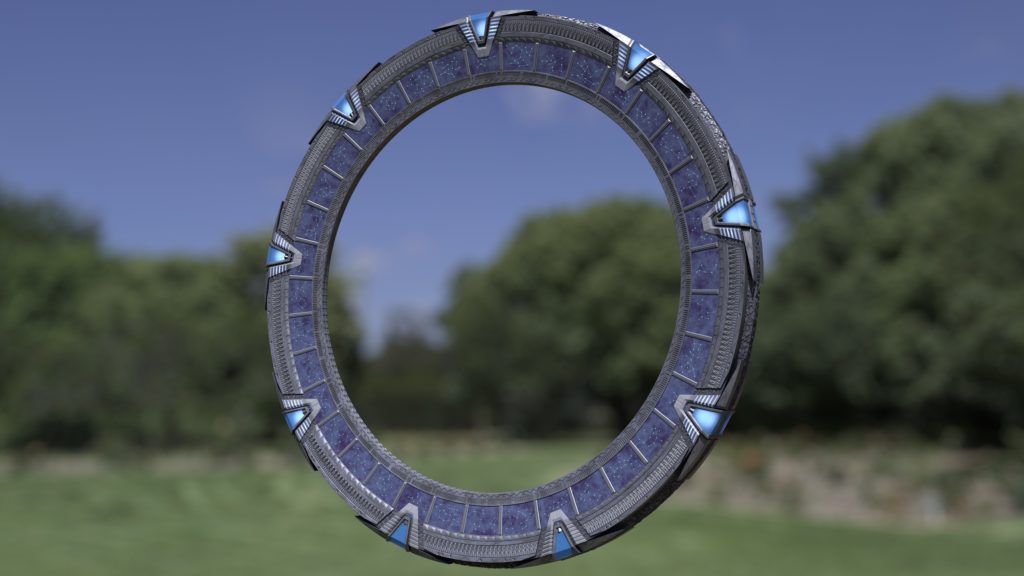
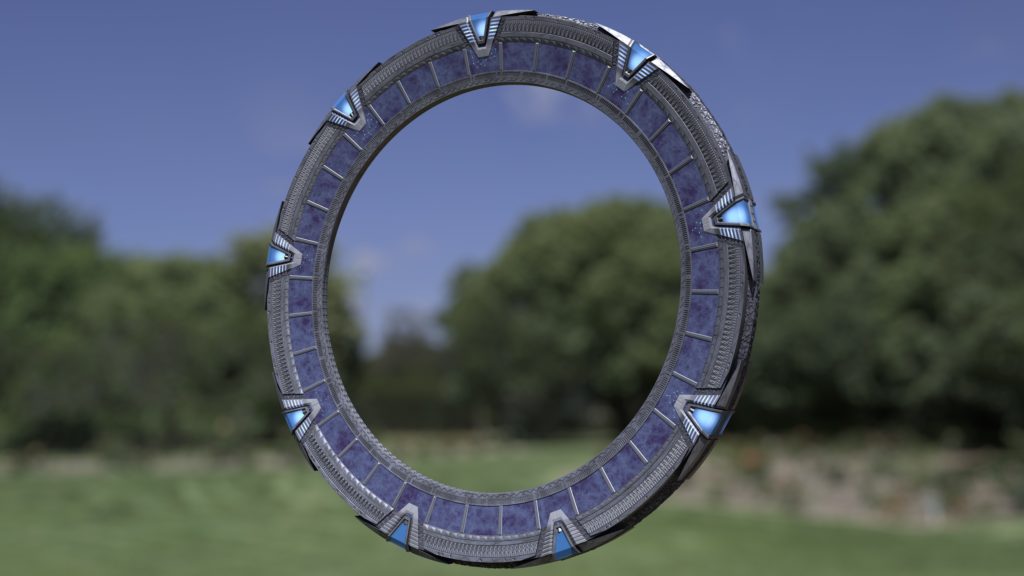
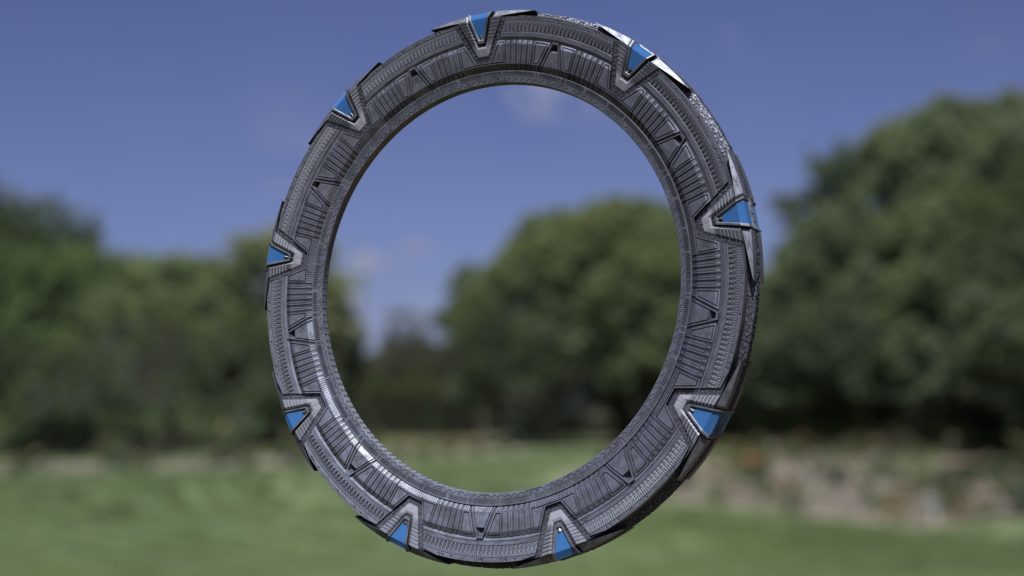
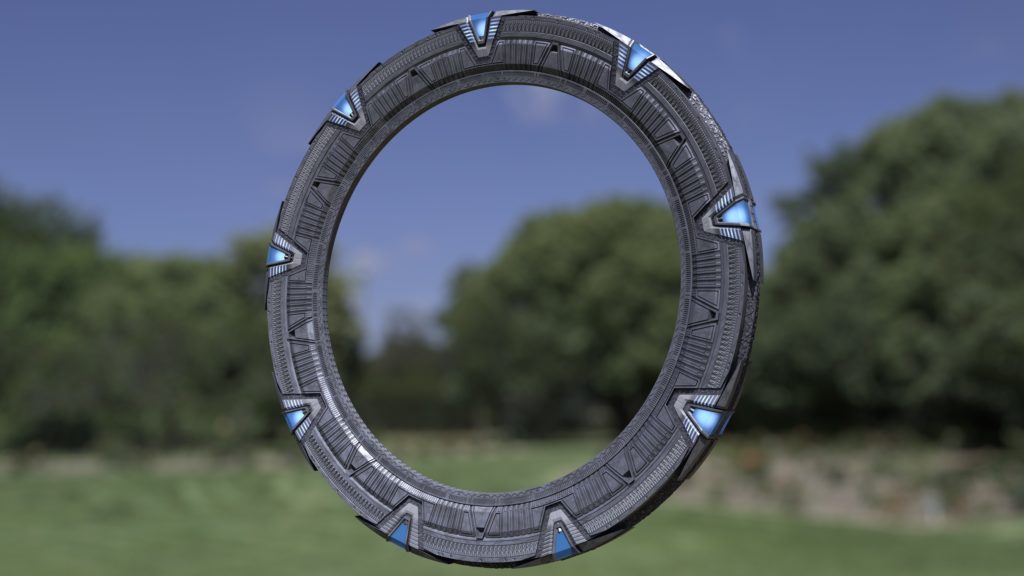
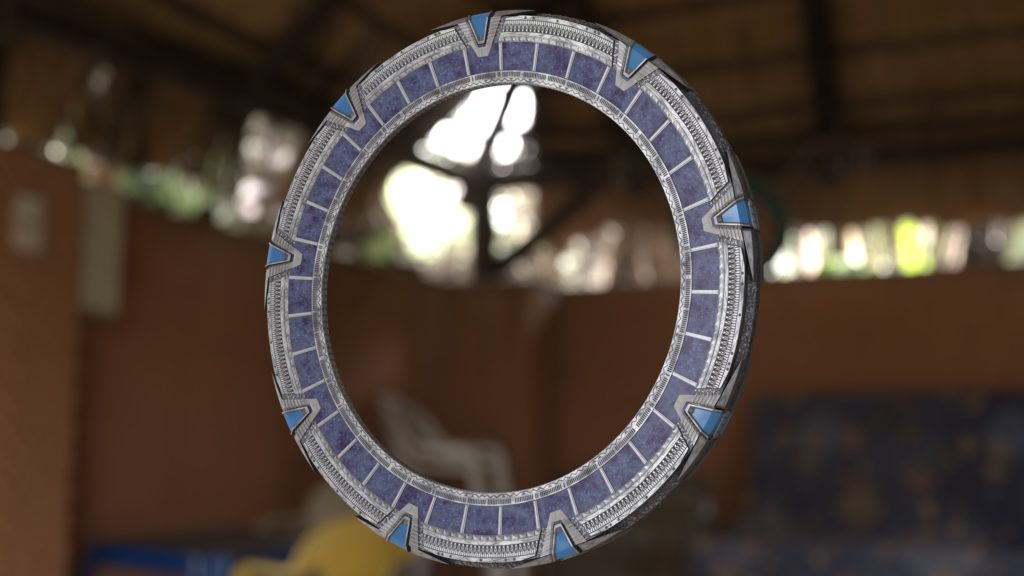
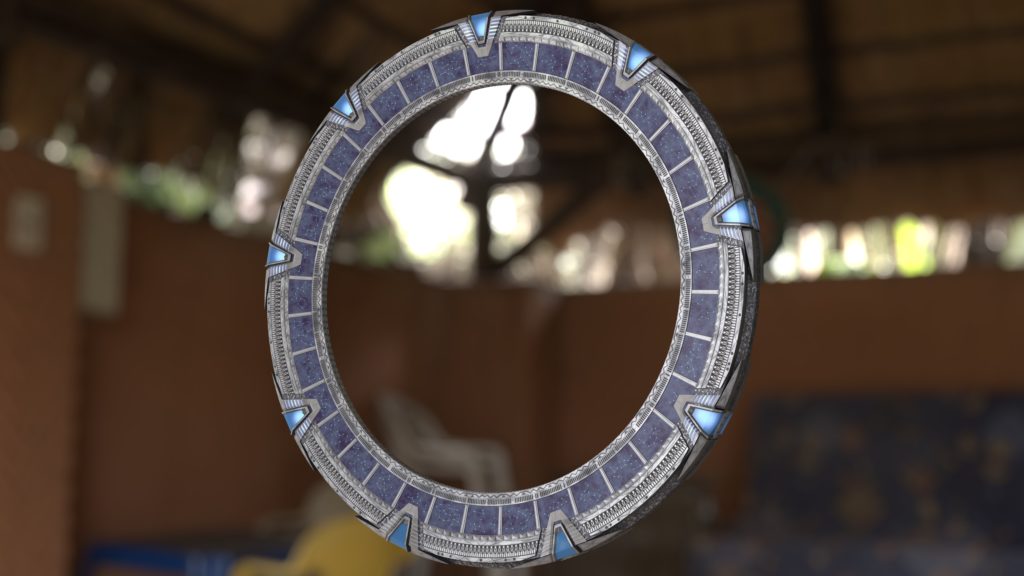
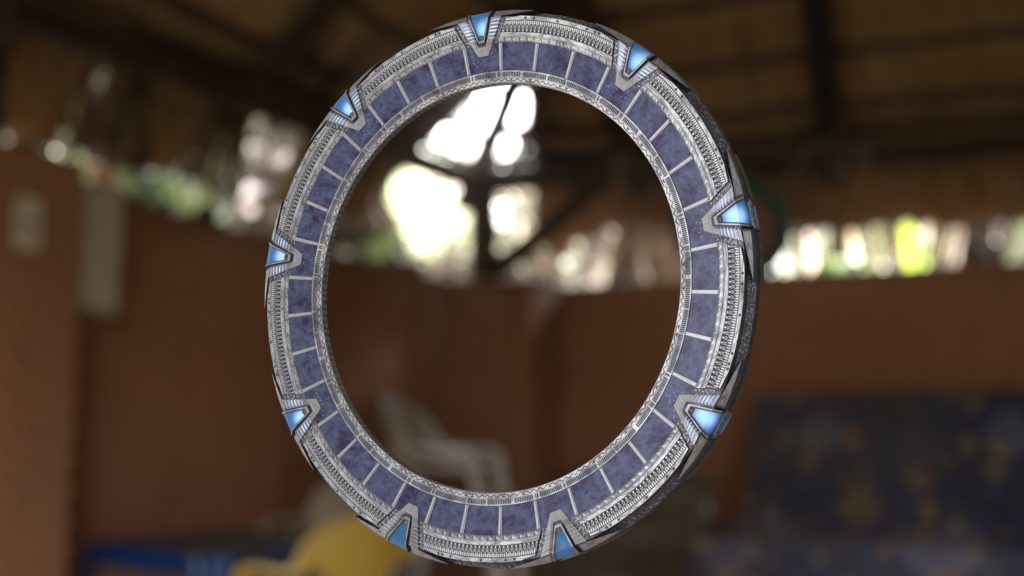
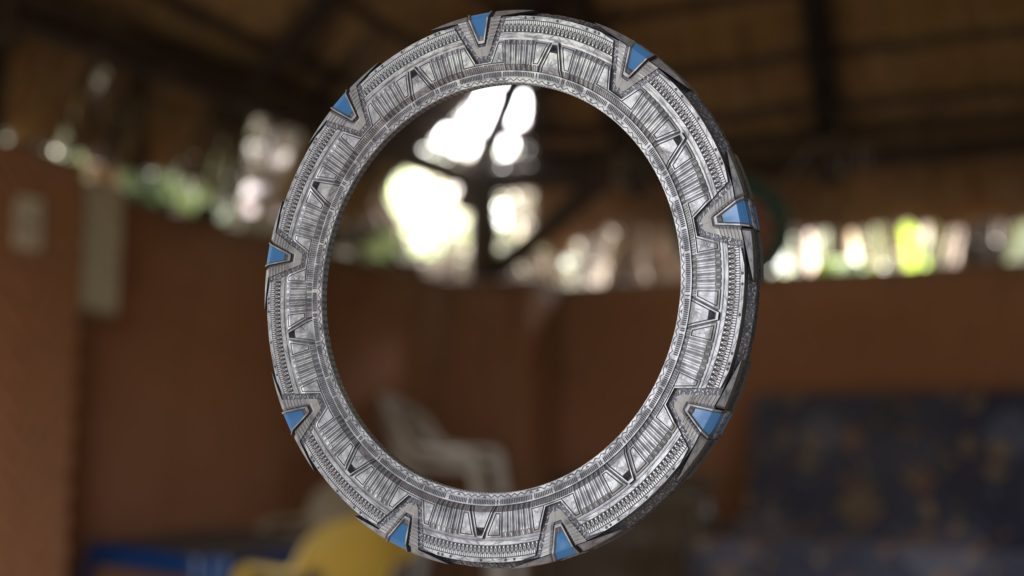
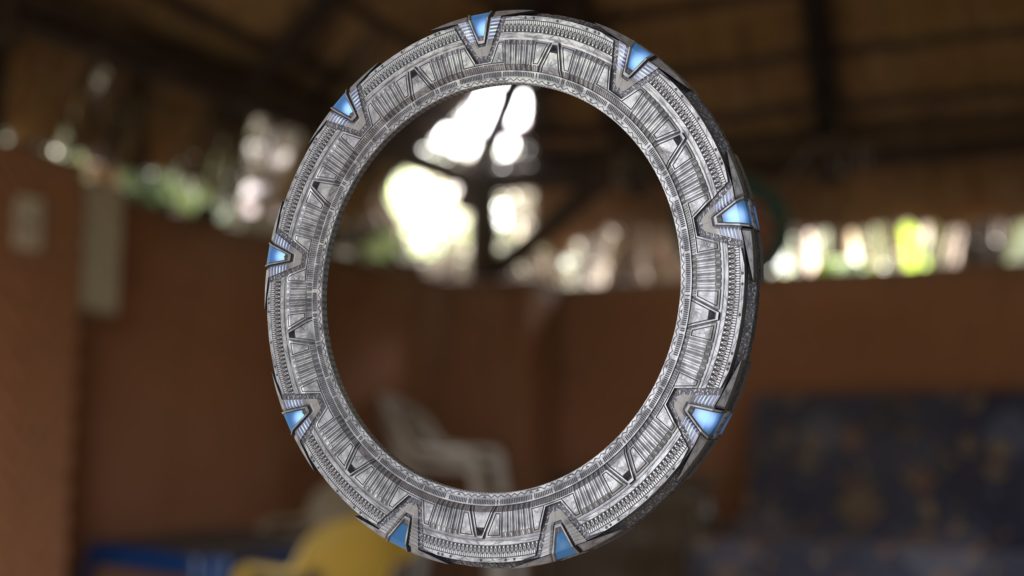
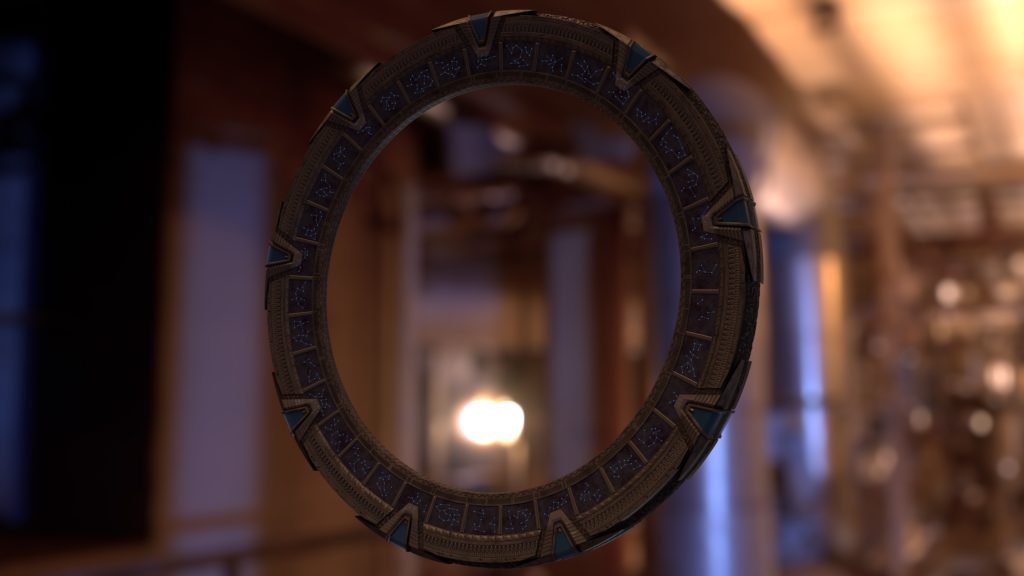
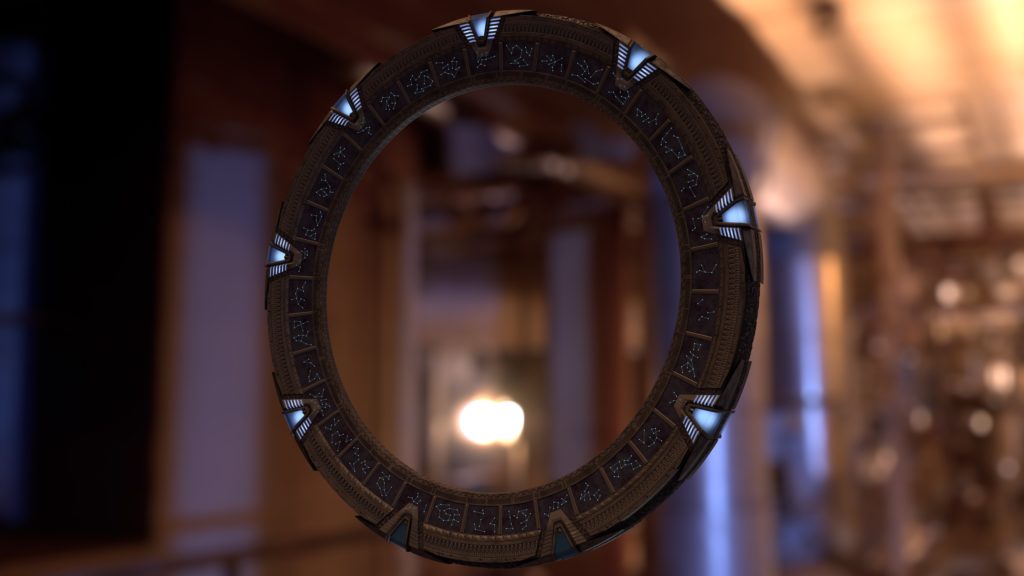
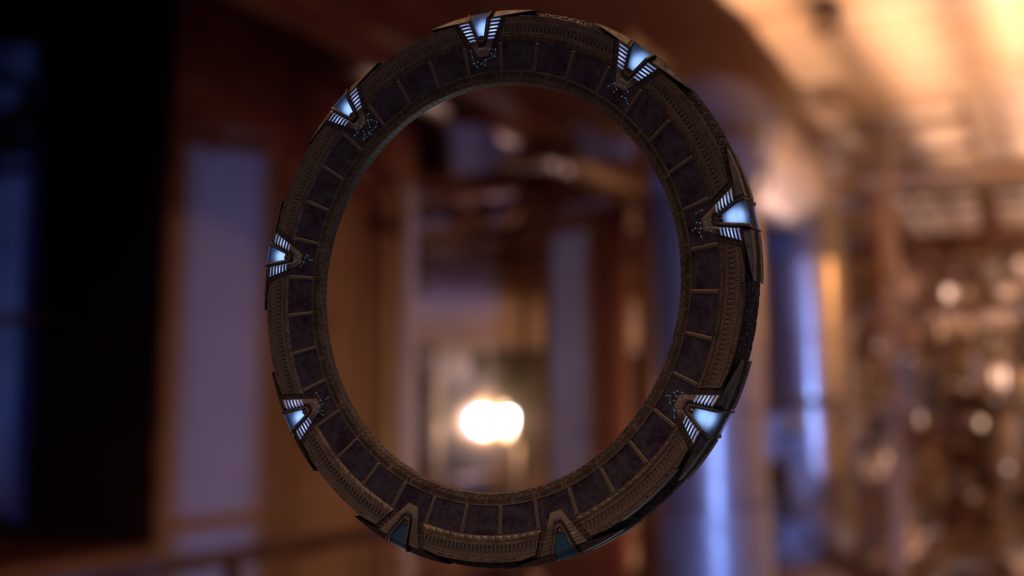
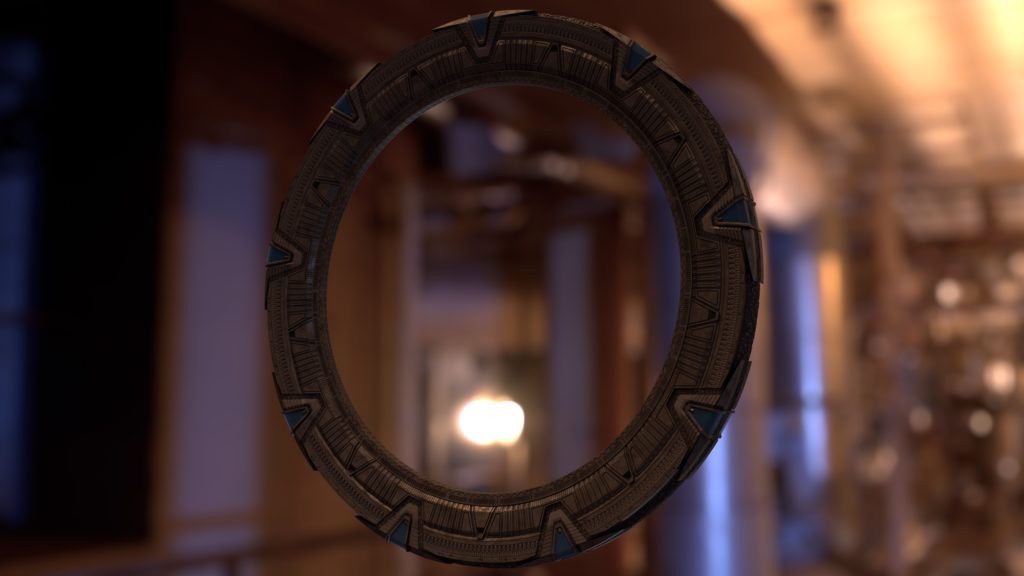
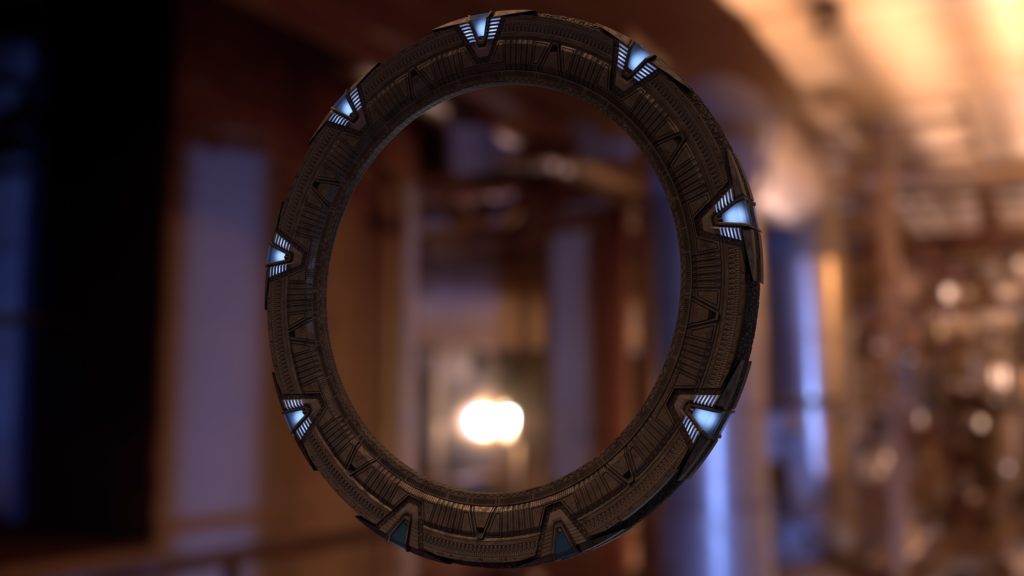
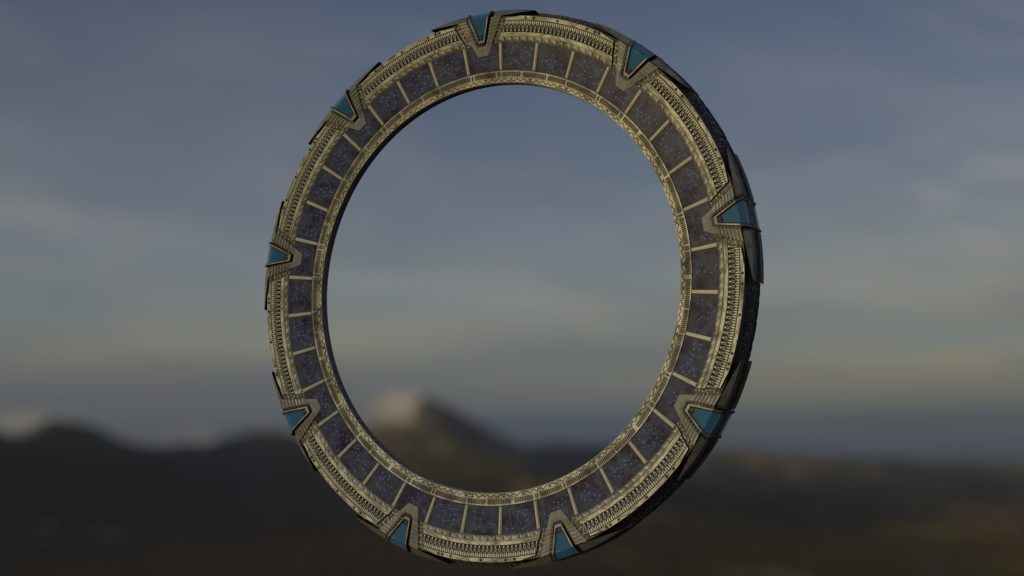
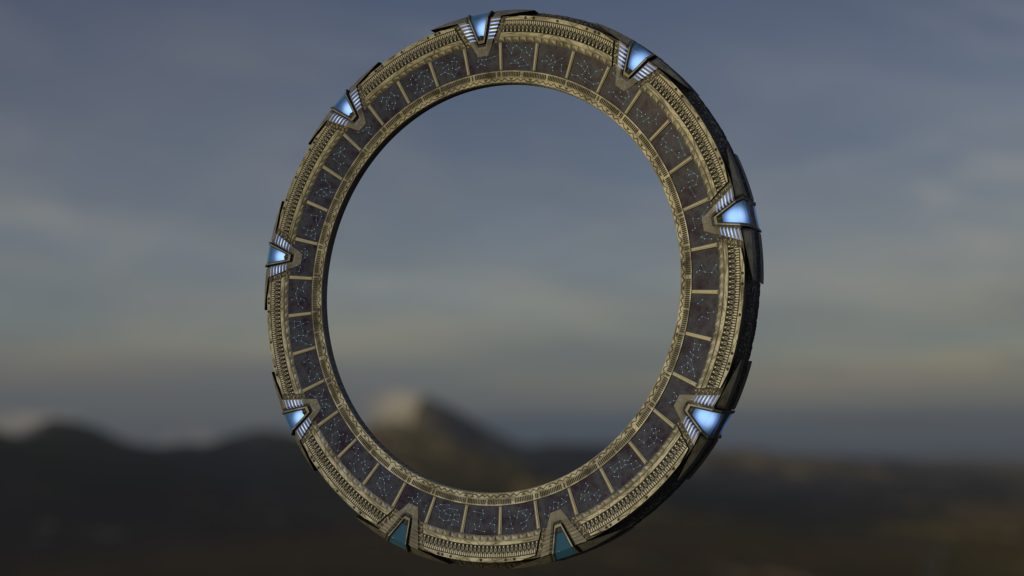
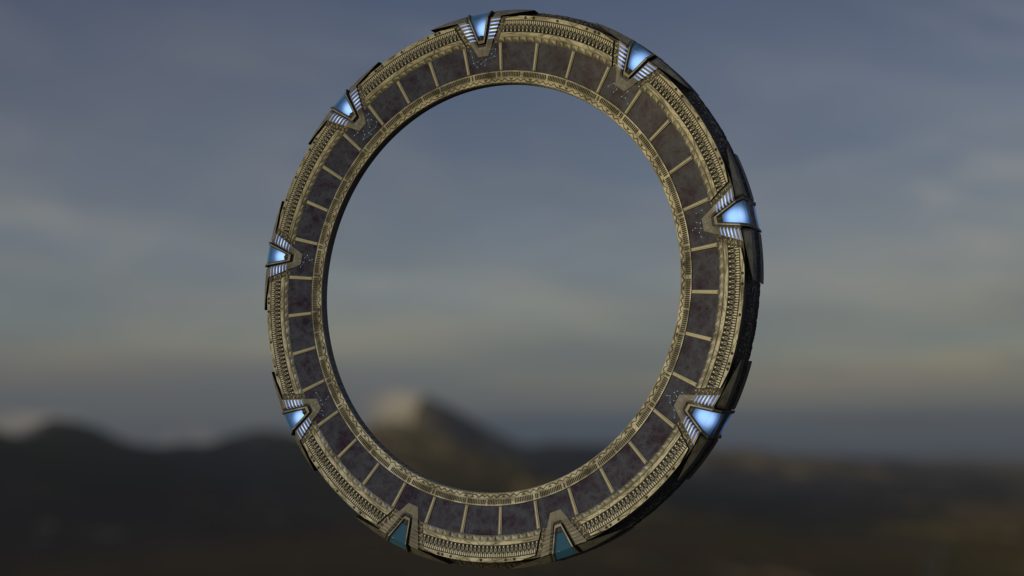
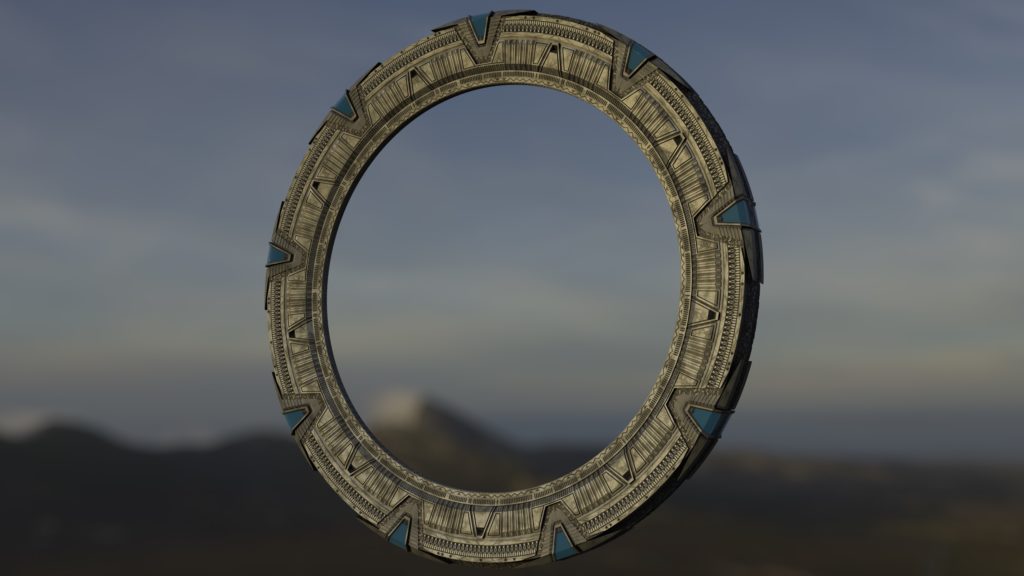
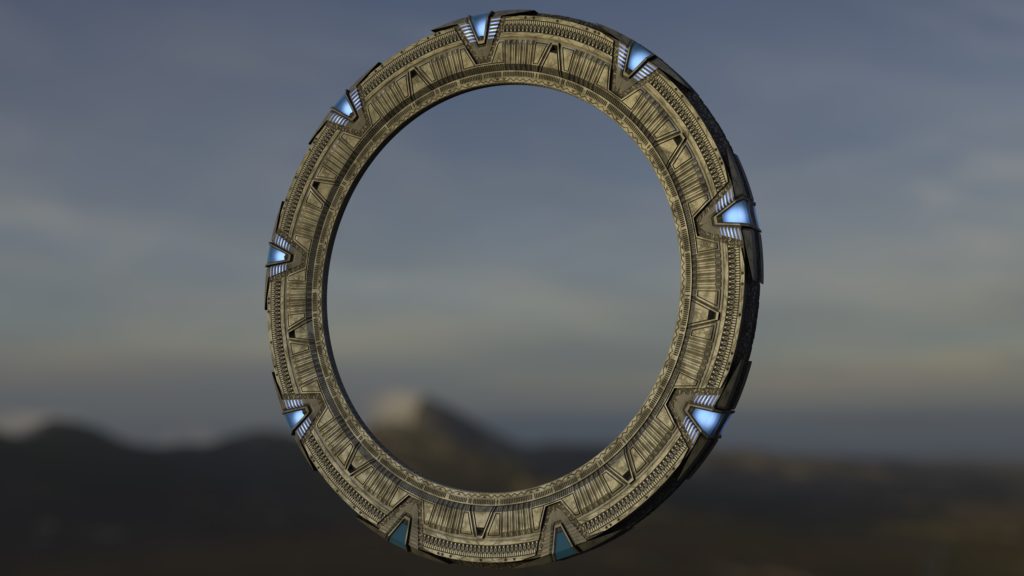
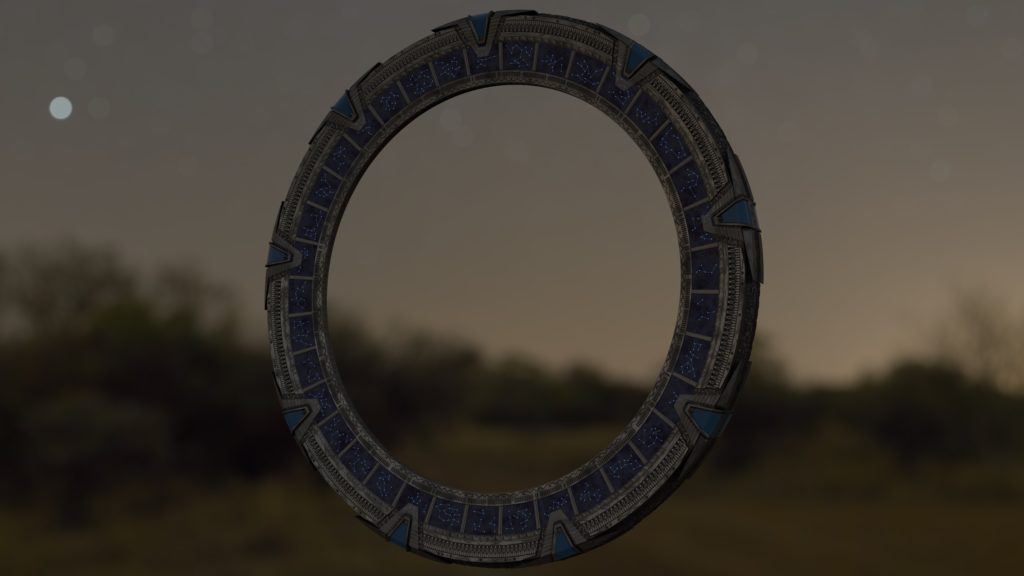
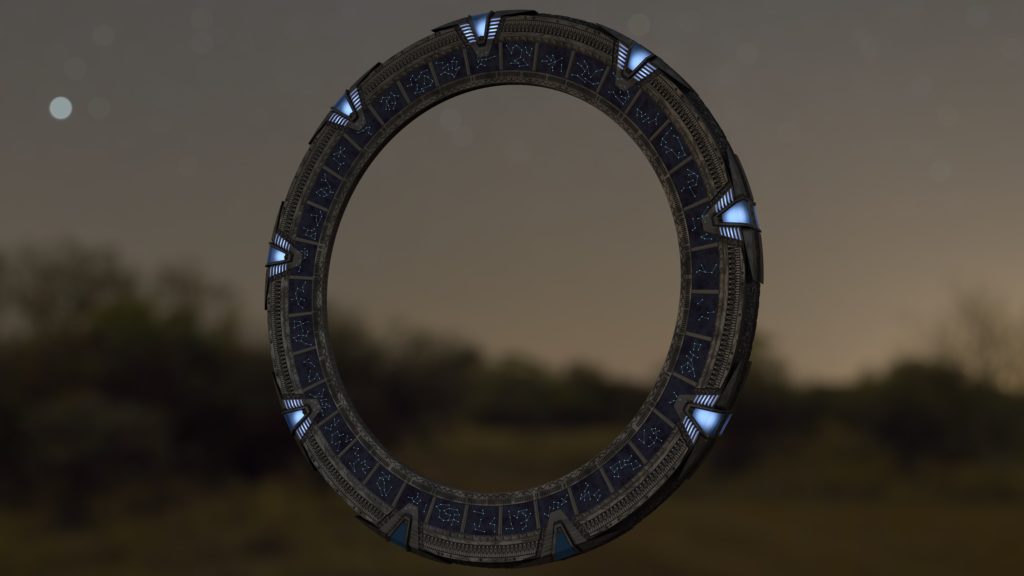
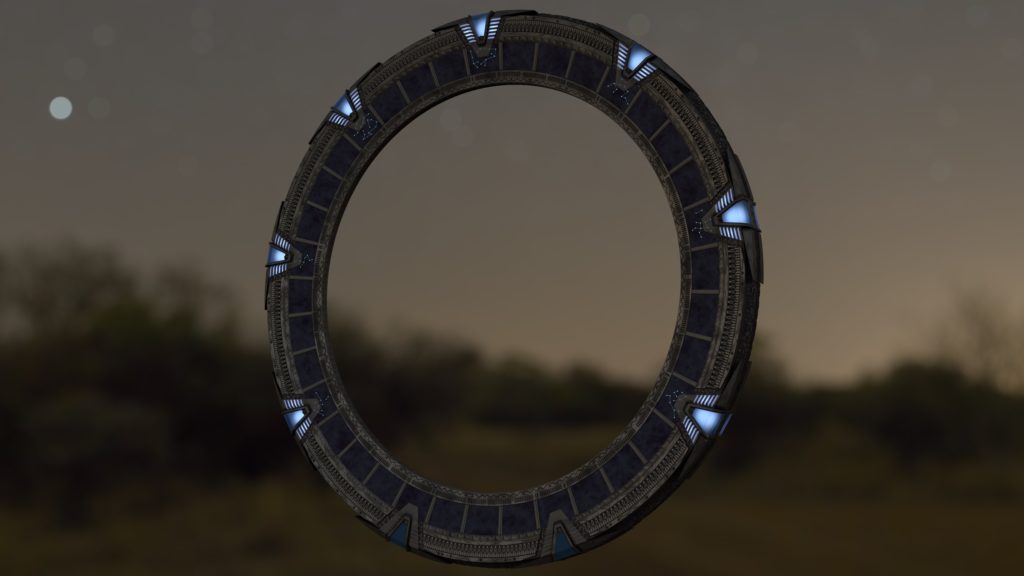
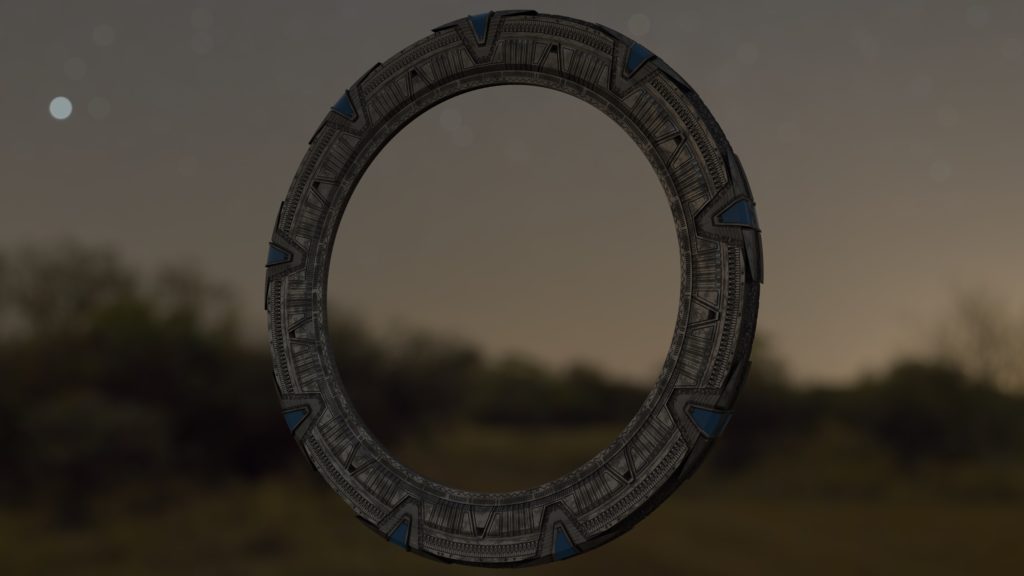

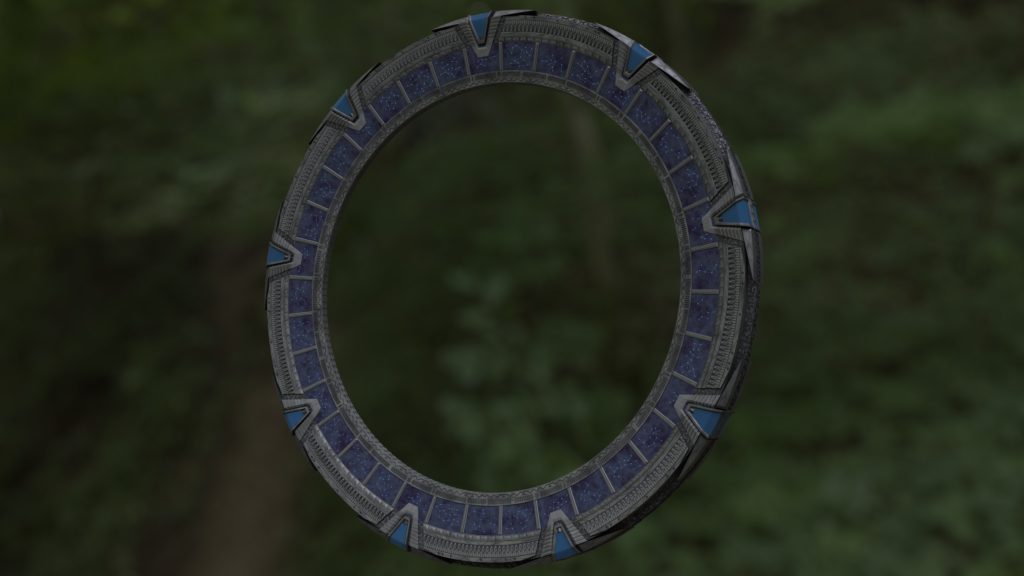
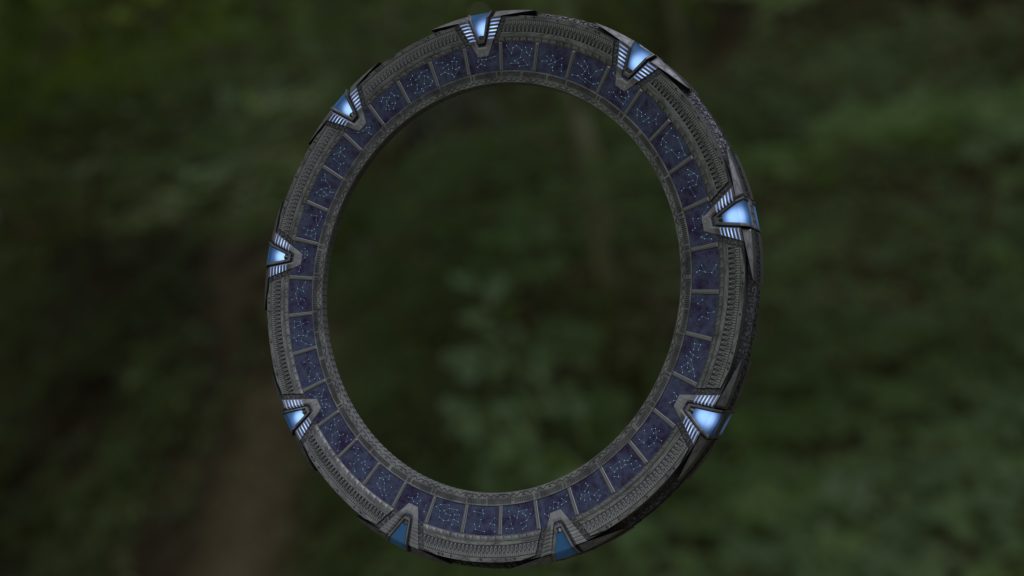
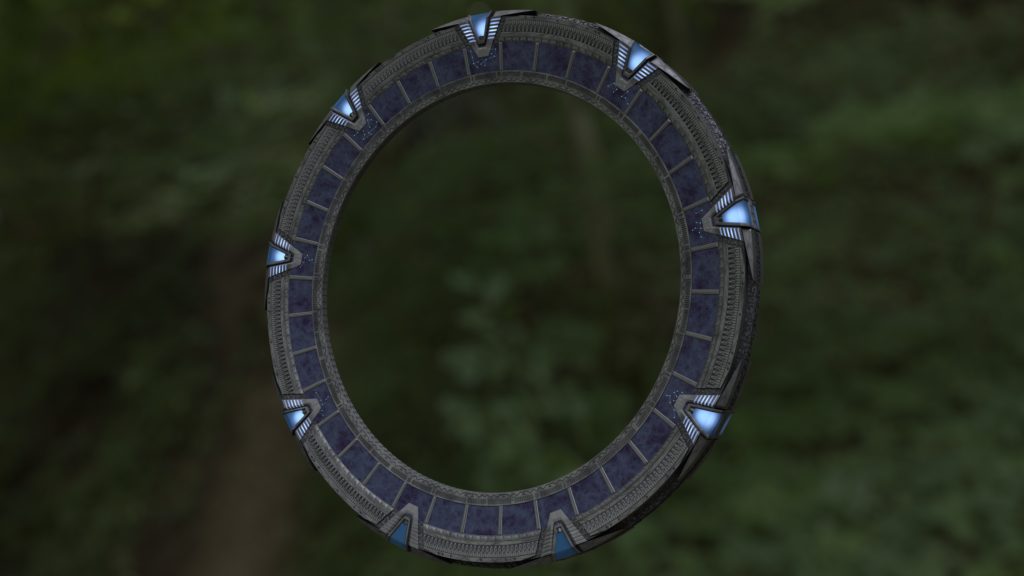
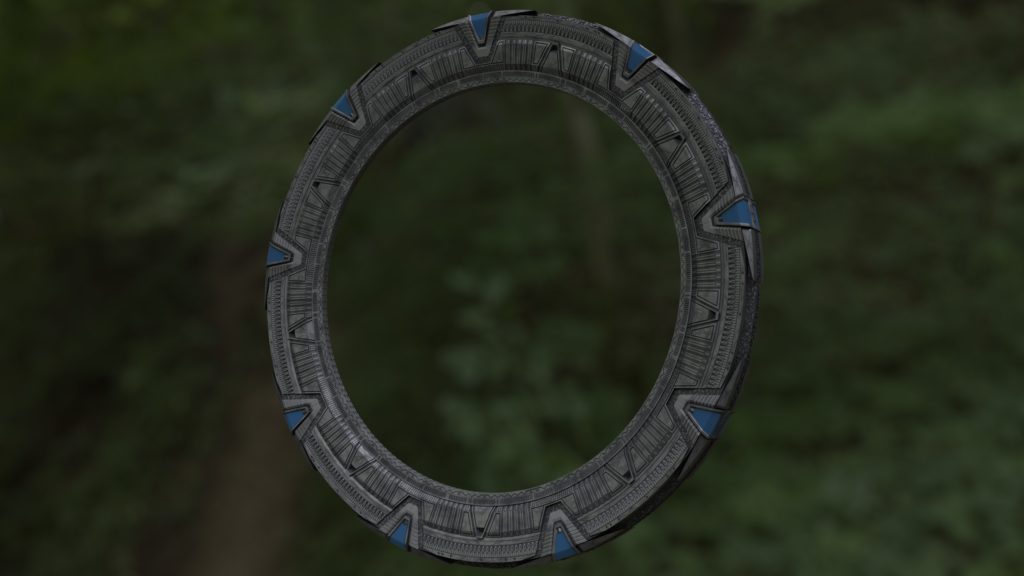
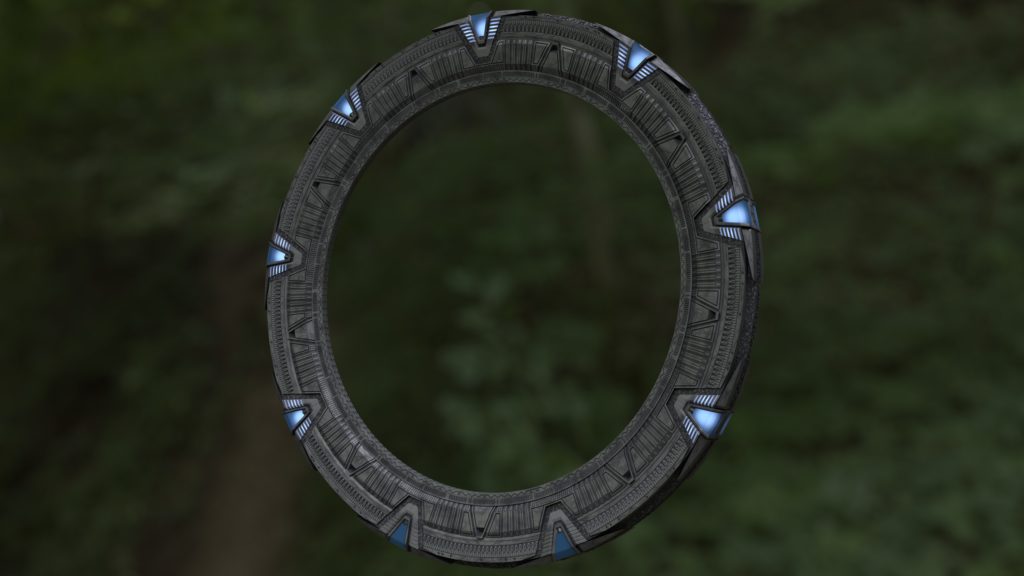
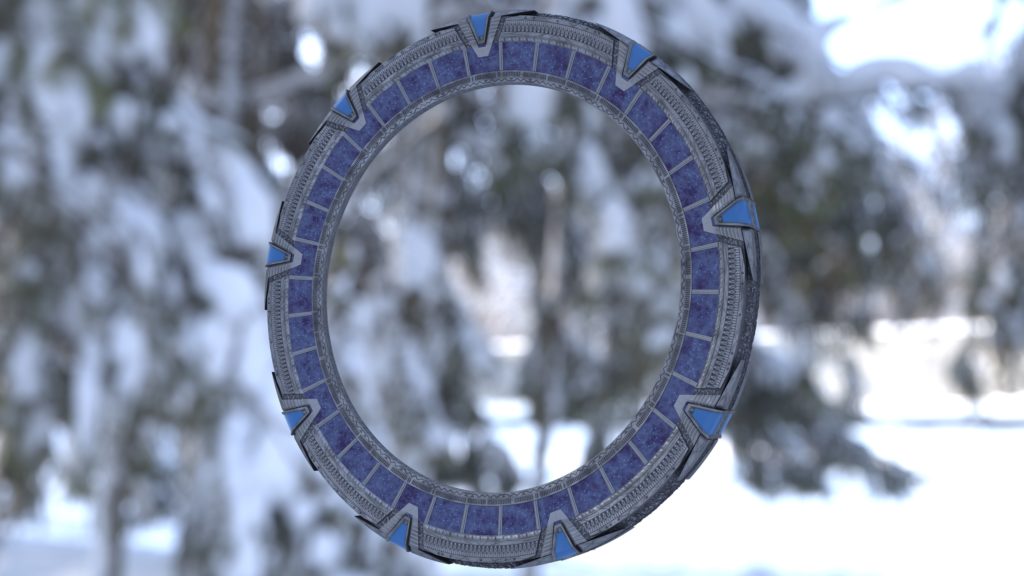
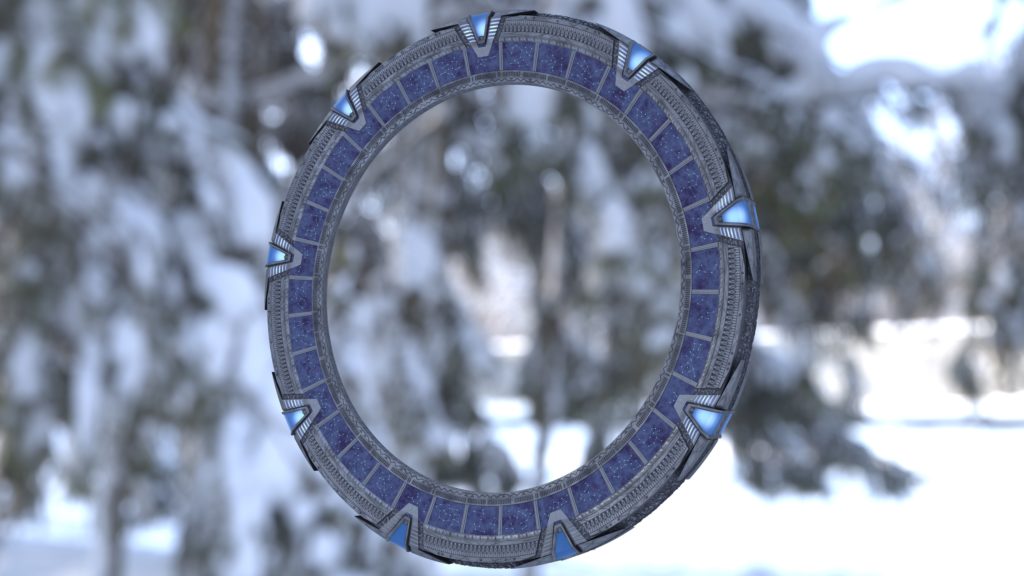
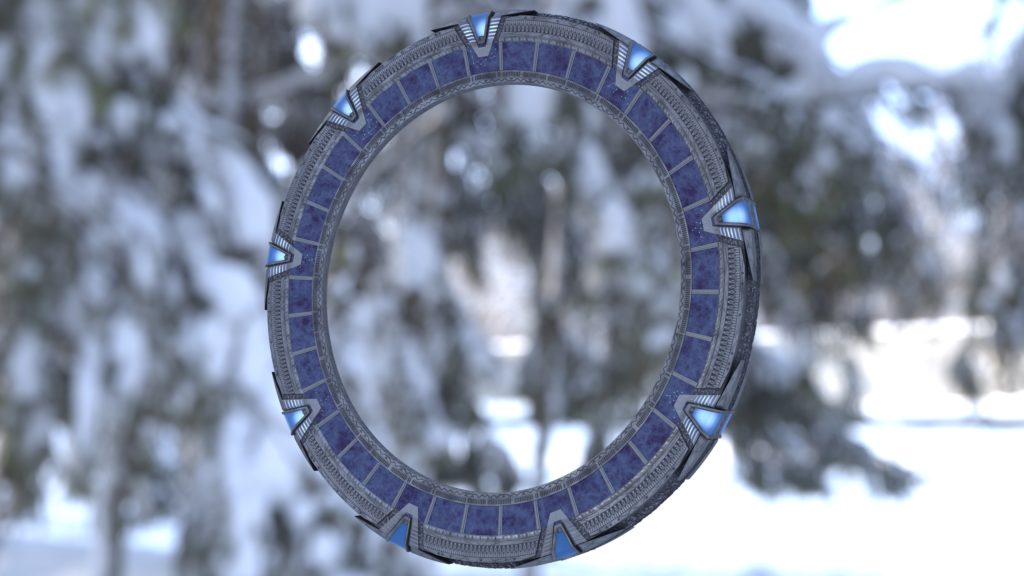
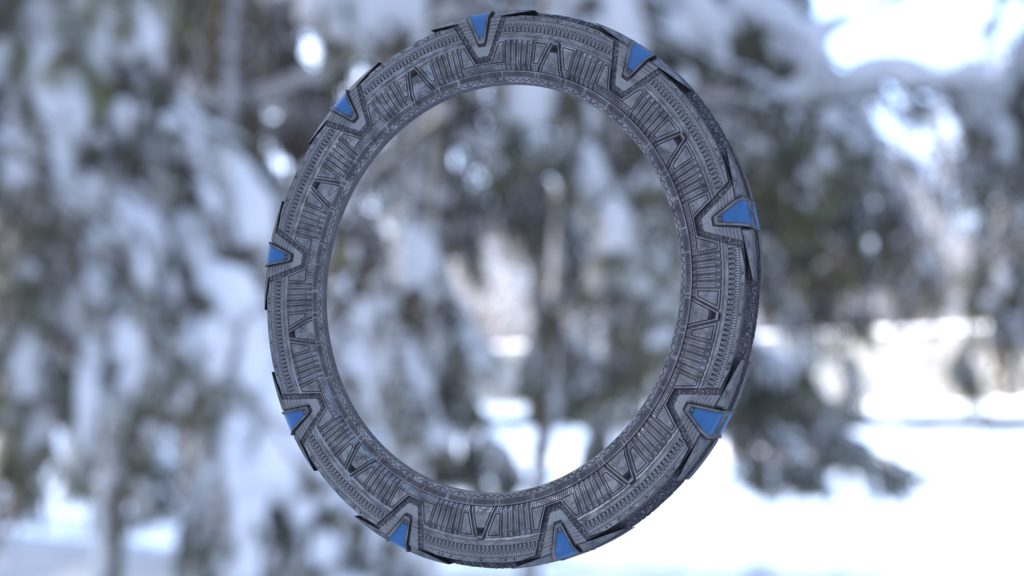
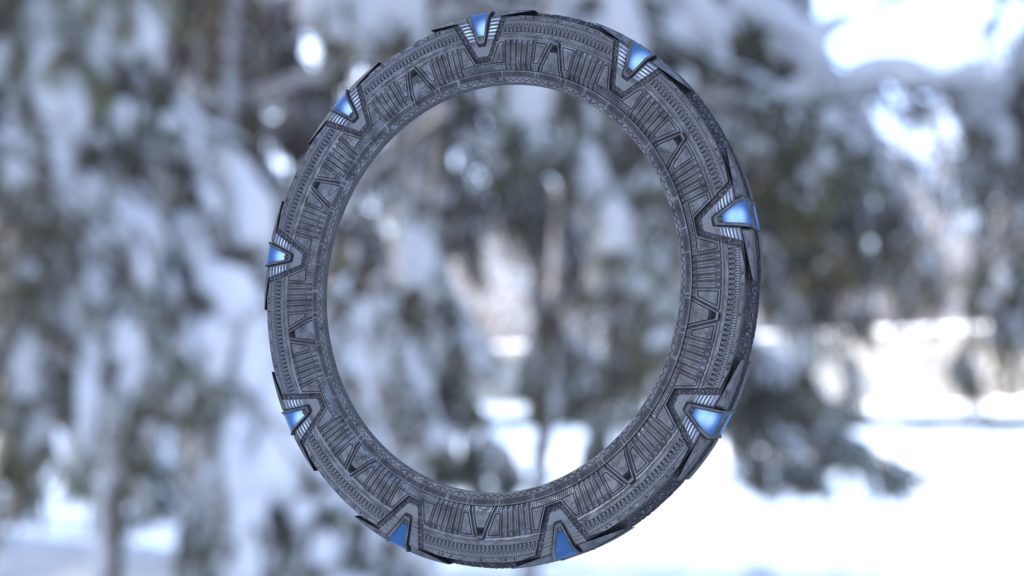
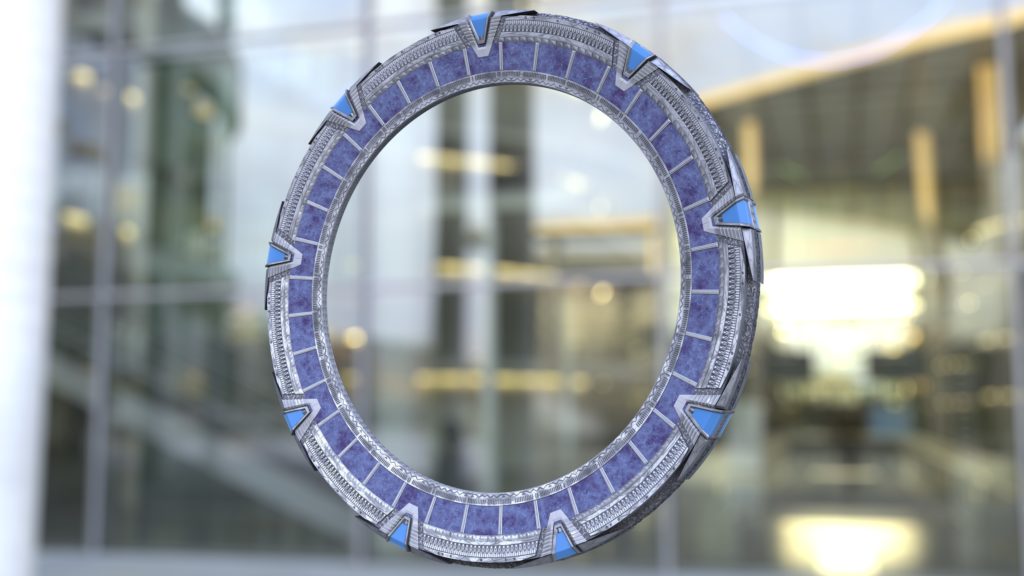
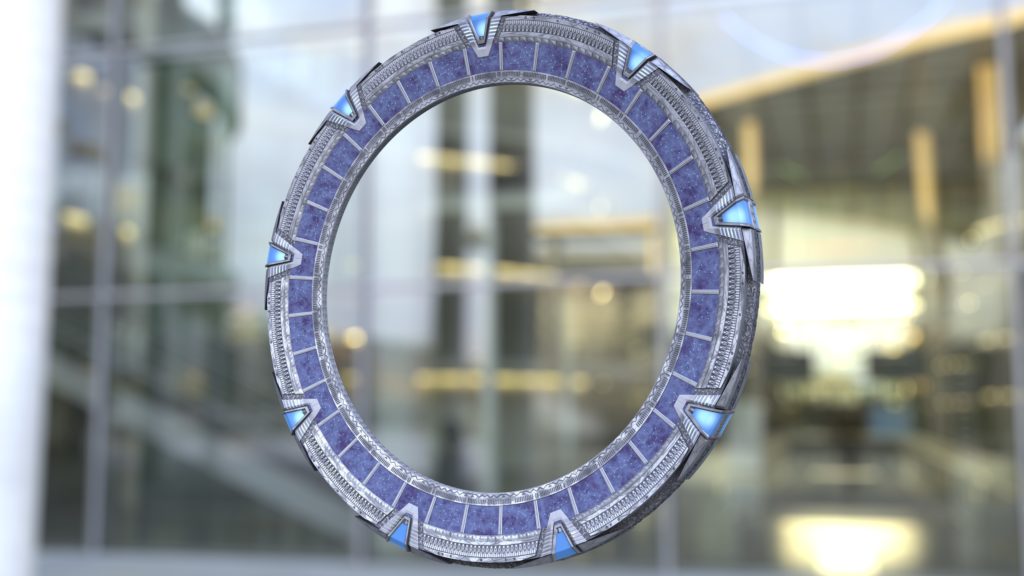
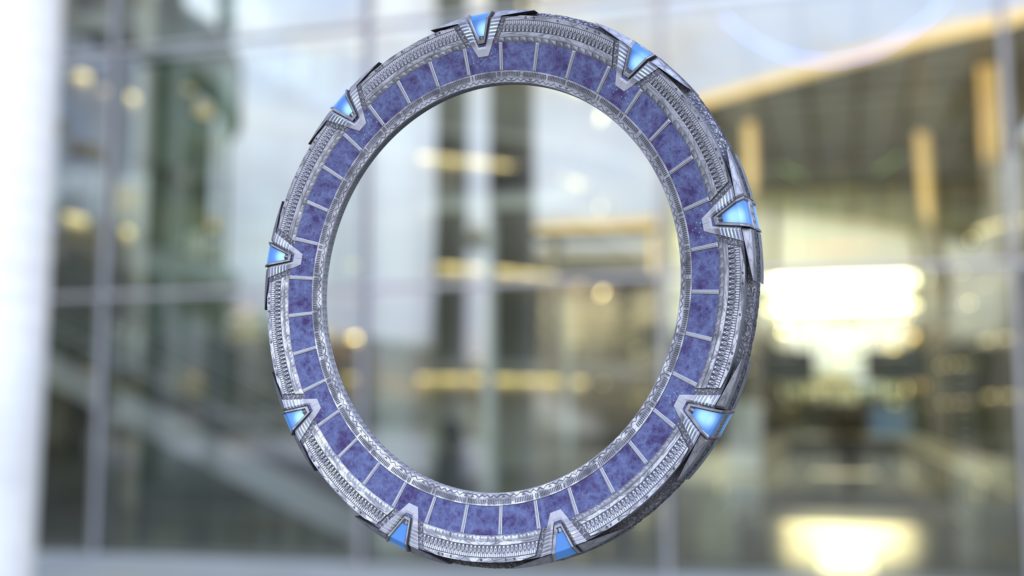
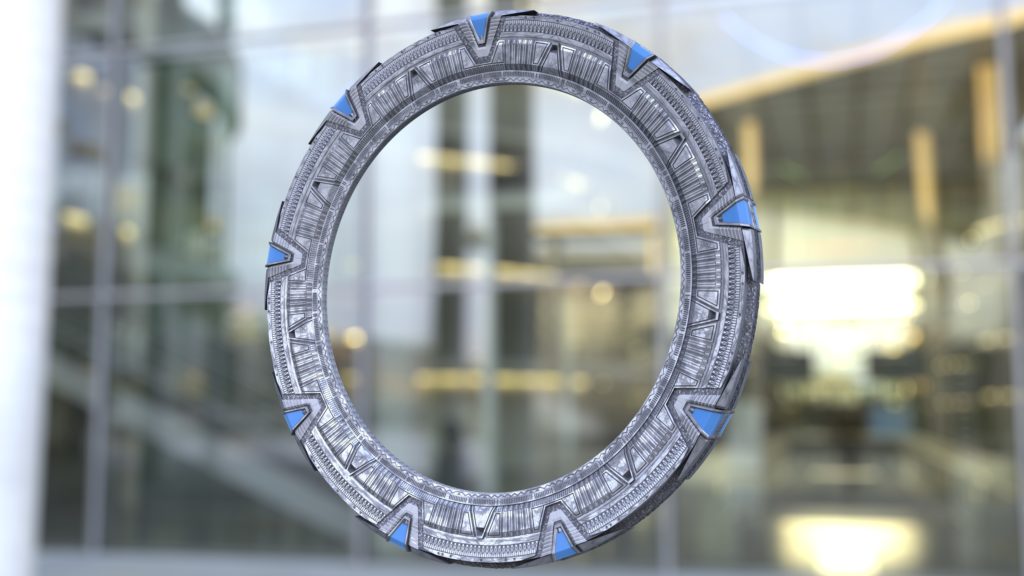
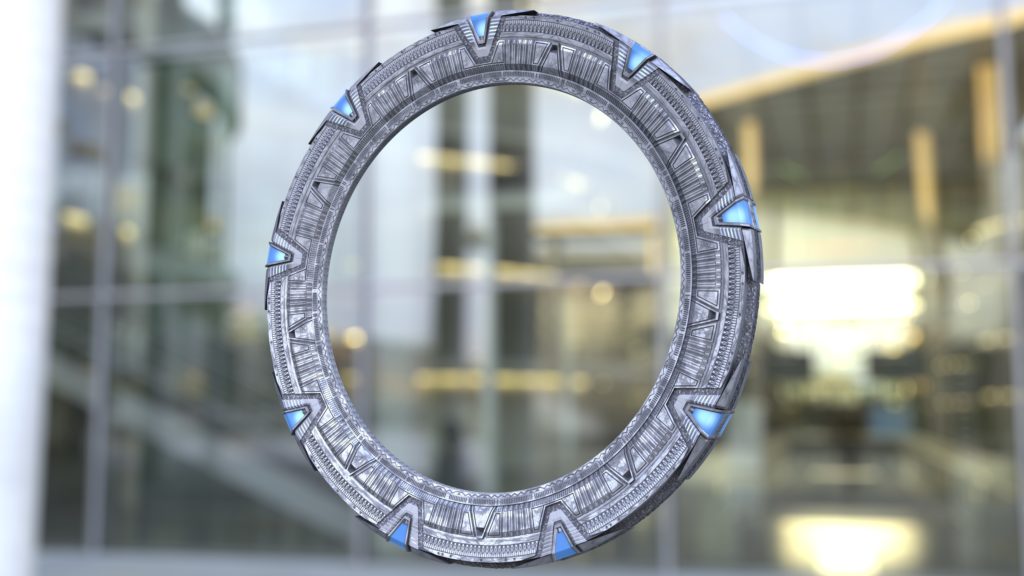

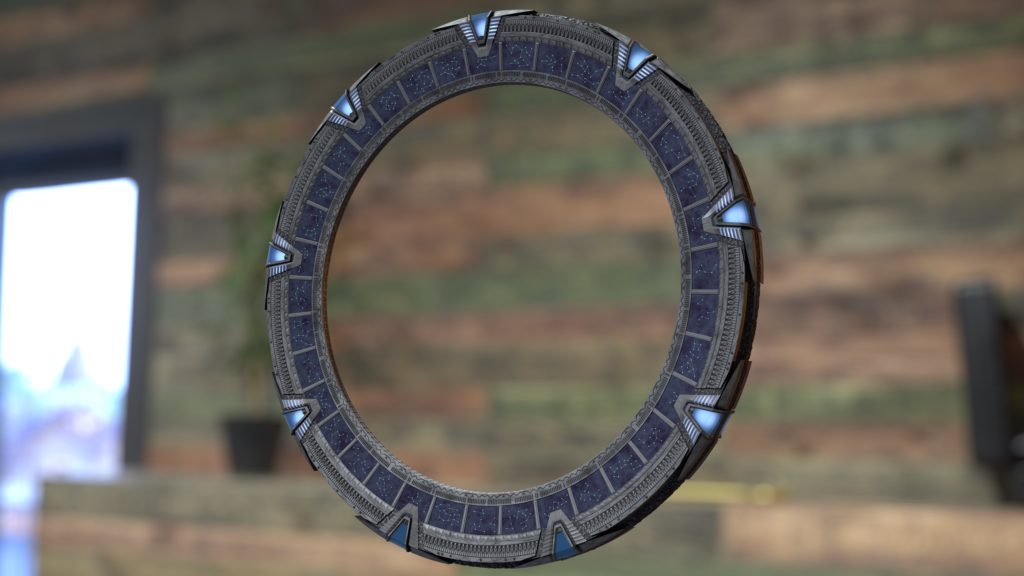
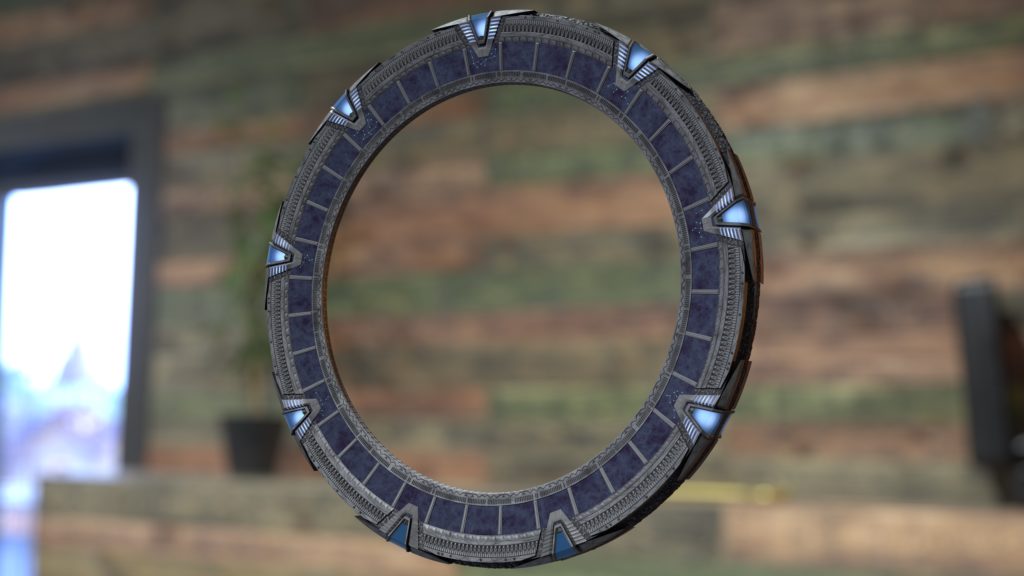
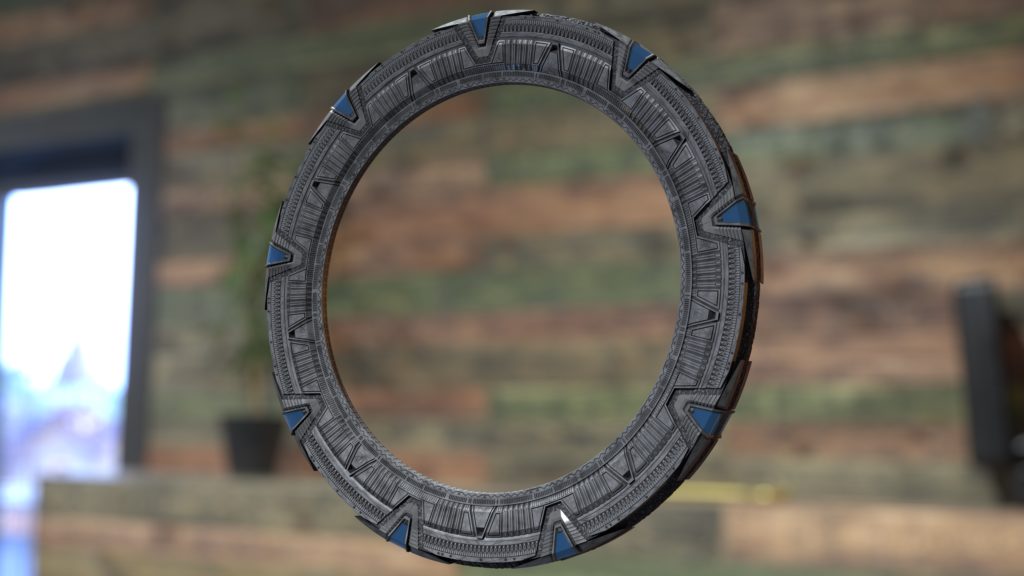
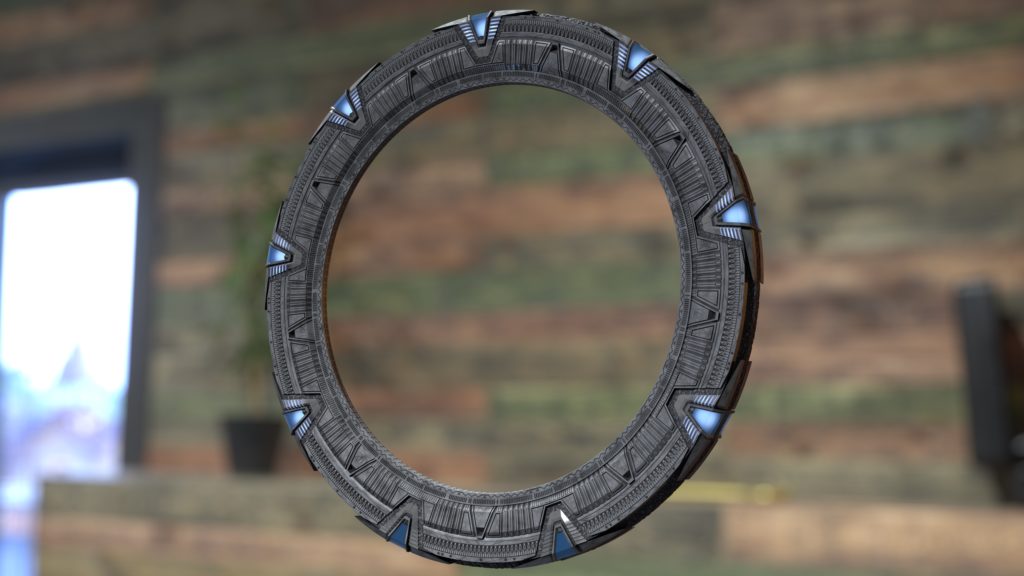
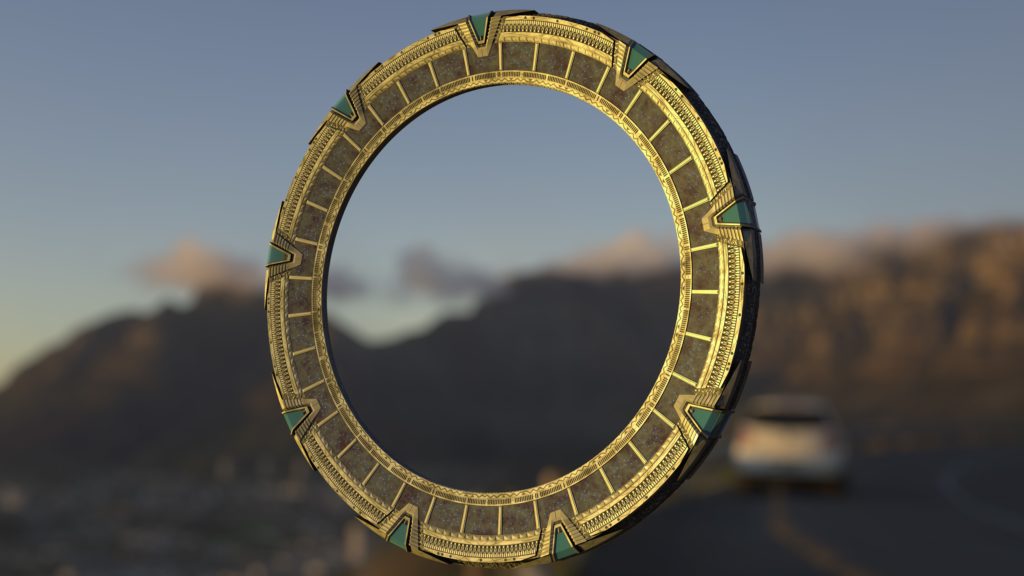
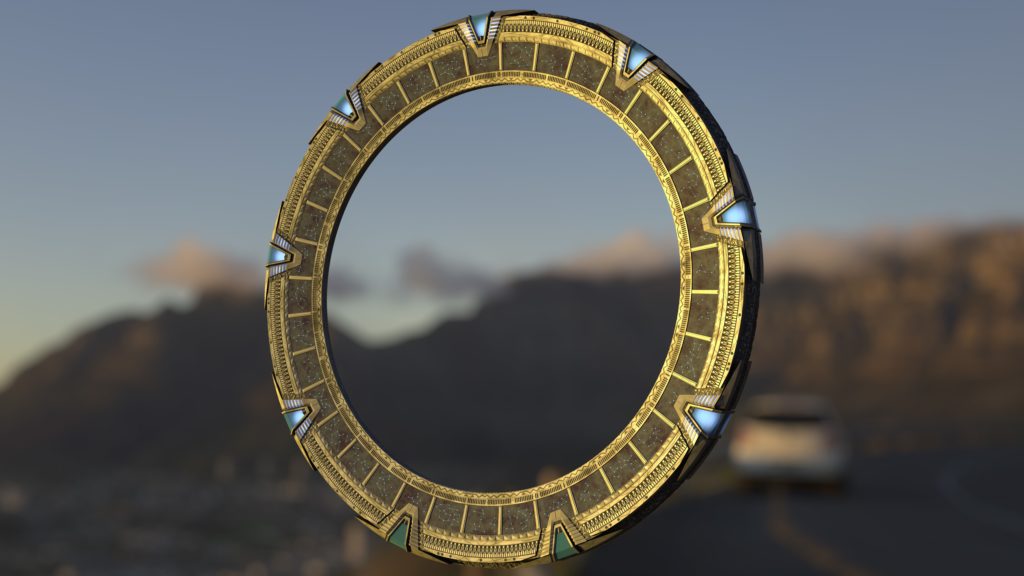
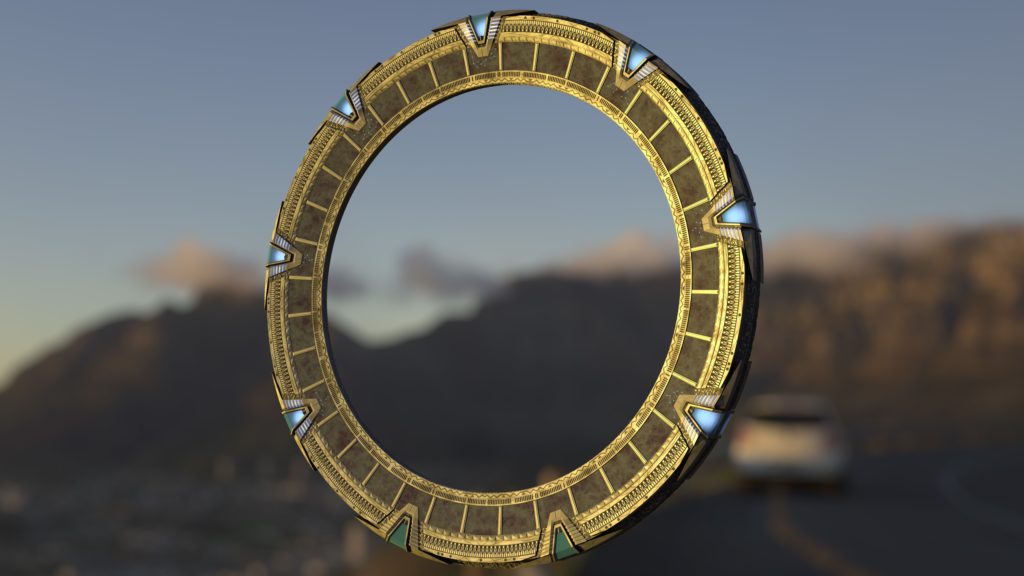
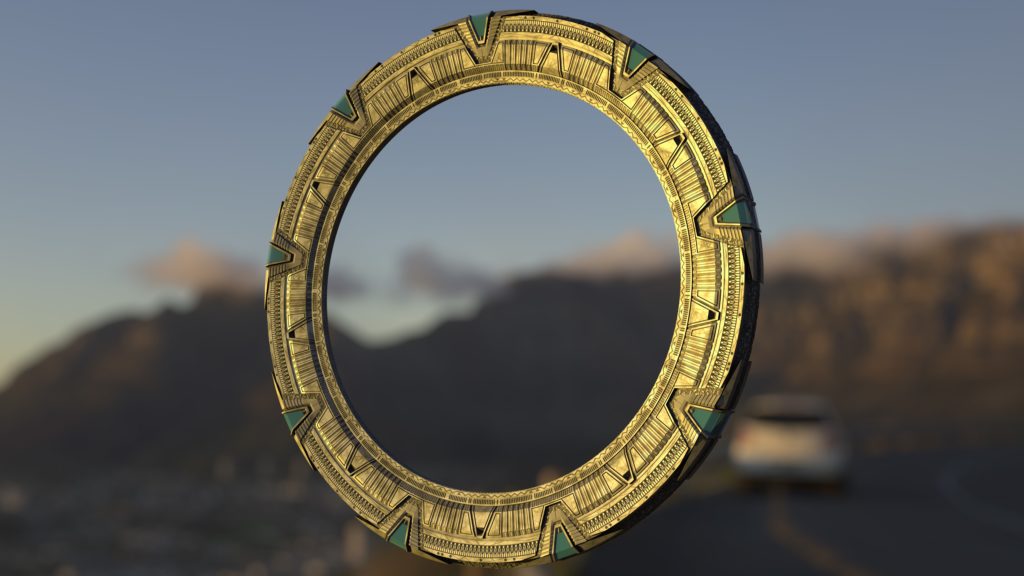
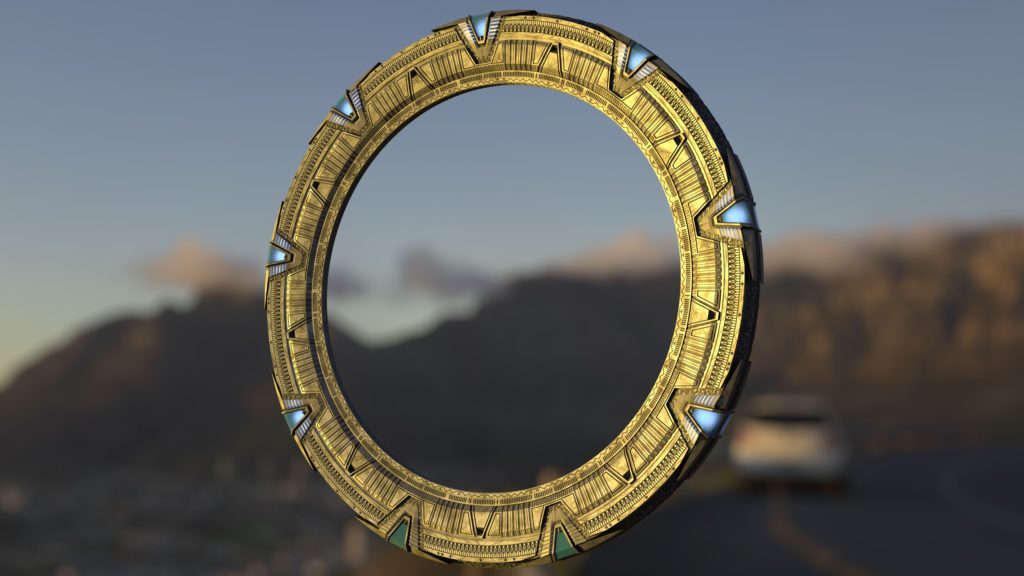
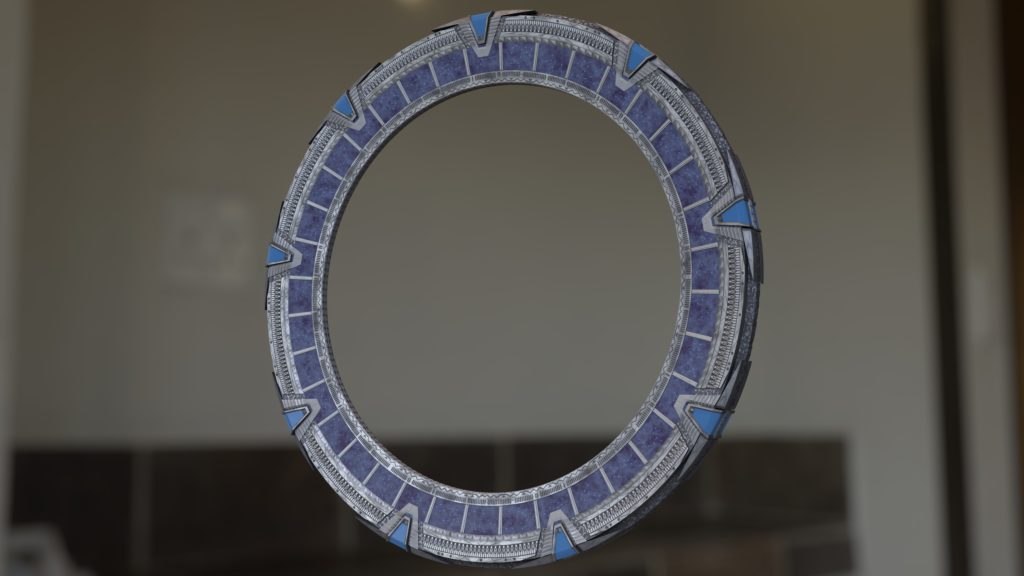
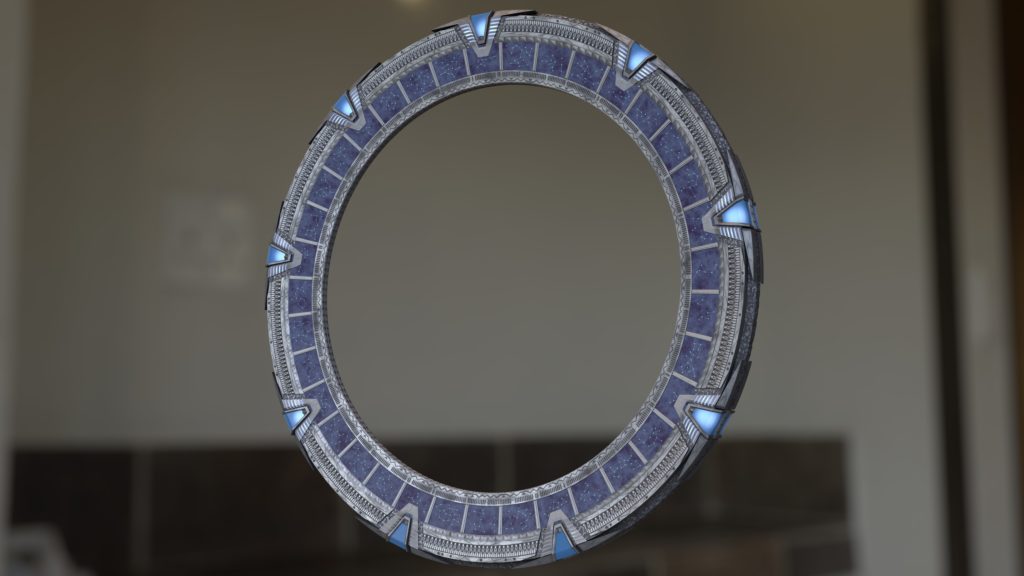
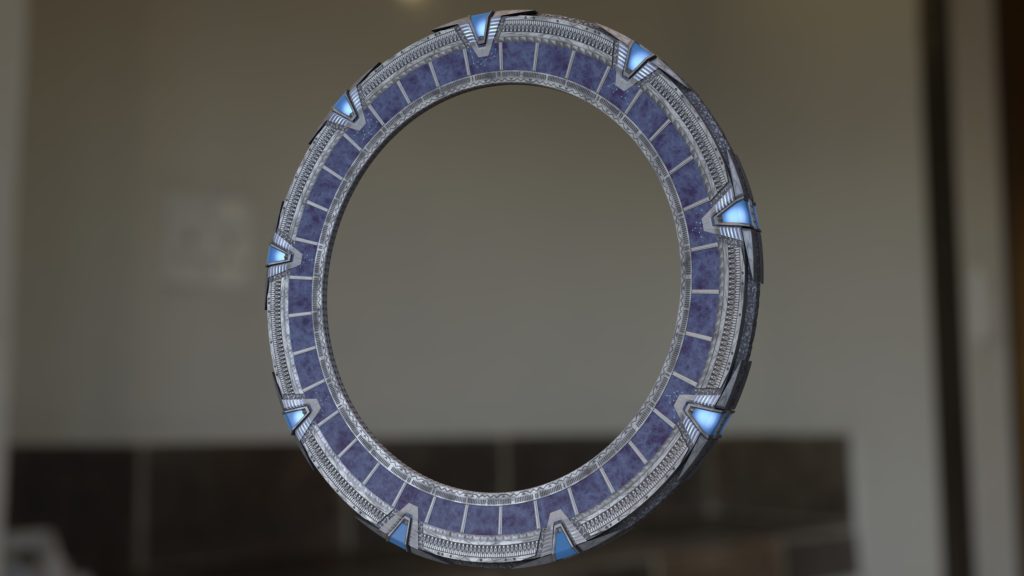
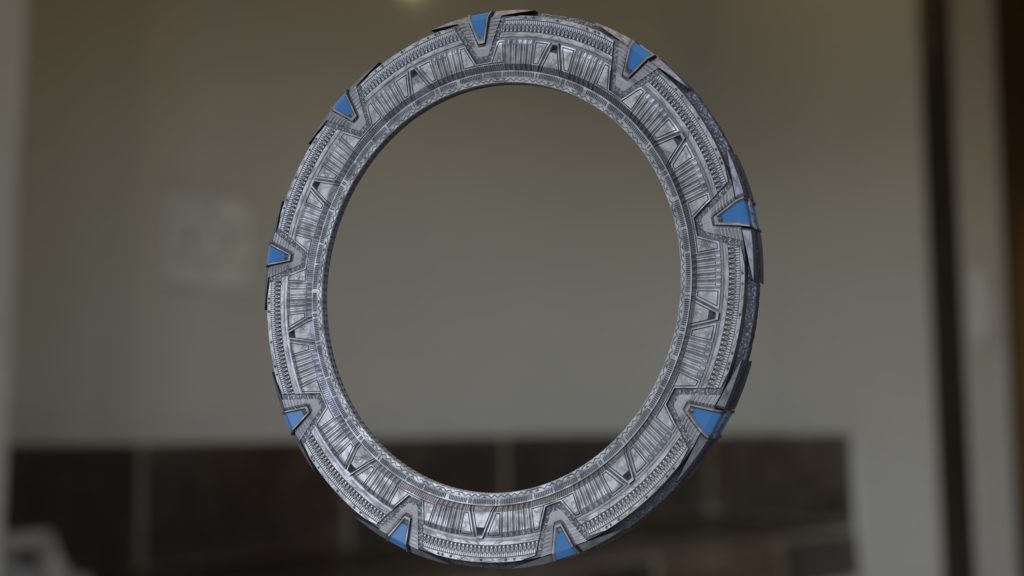
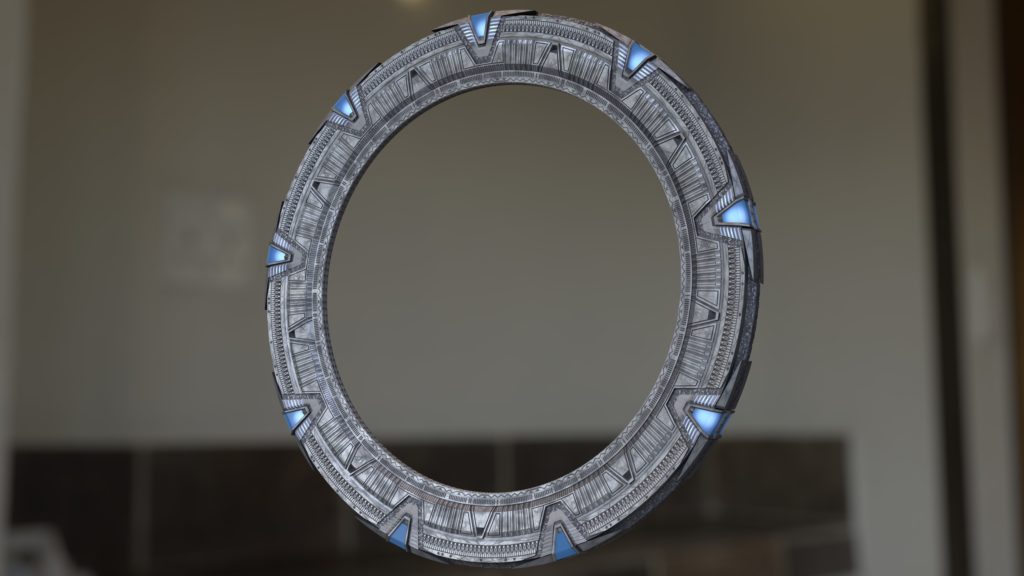
Model Revision History:
- Version 3.1, July 31, 2021:
Revisions to glyph and inner ring textures - Version 3.0, July 30, 2021:
Initial Release
| ↑1 | Atlantis Expedition Logo by CmdrKerner |
|---|---|
| ↑2 | The Universe version being a totally different design, and the Origins version being intended to match the movie version, even if it didn’t quite hit the mark perfectly. |
| ↑3 | Local Mirror |
